Best MP3 player 2025: top portable hi-res music players for any budget, all tested by our experts
The best MP3 players for dedicated, uninterrupted music on the fly
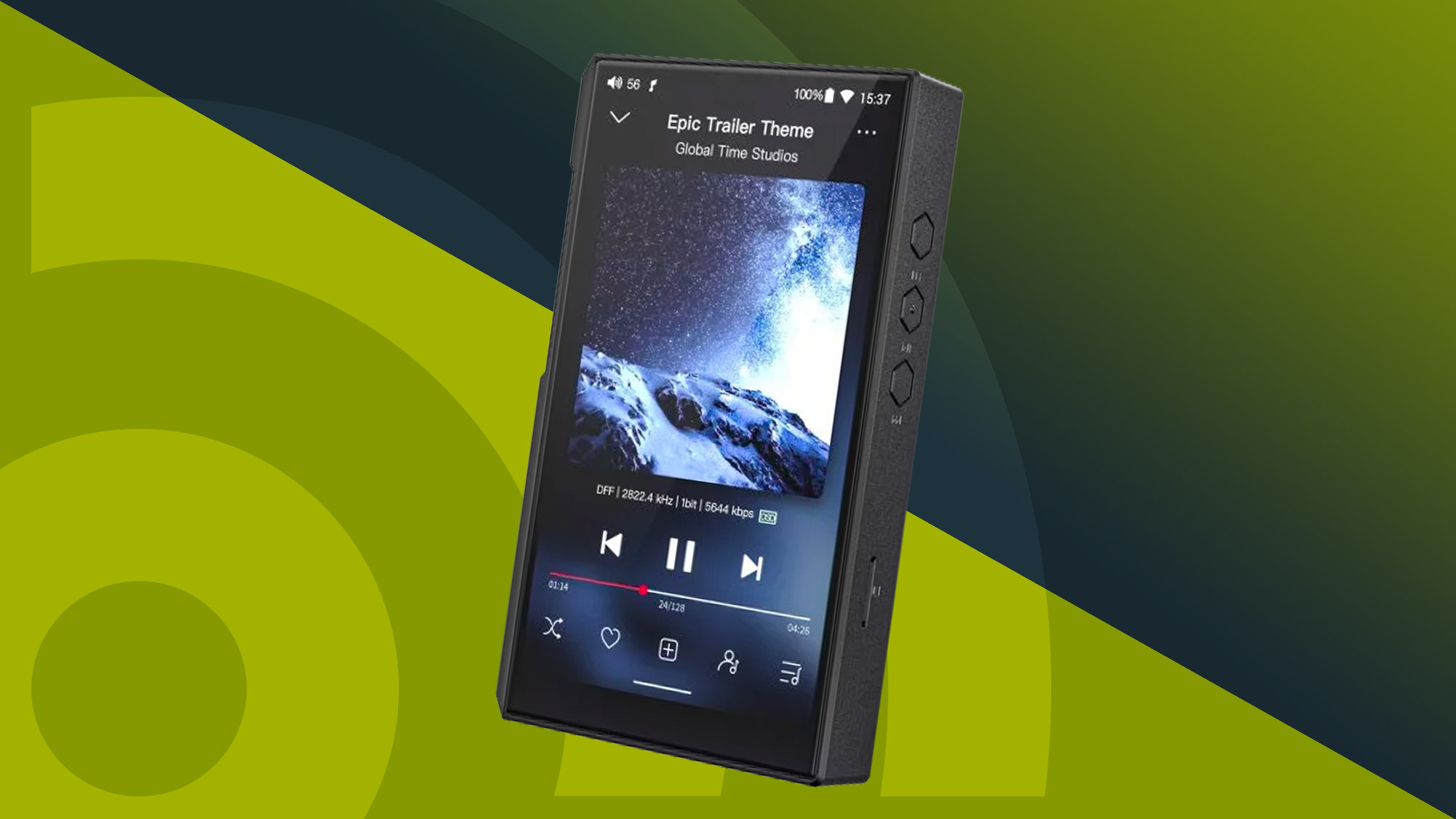
Choosing the best MP3 player isn’t as simple as it sounds – firstly because even the name 'MP3 player' is to do this product category down. That is to say that today’s devices have evolved far beyond your lossy stored music players. They’re now powerful high-resolution devices, usually featuring advanced onboard digital-to-analog converters (DACs) for truly premium sound. Many also come with Wi-Fi connectivity, which means easy wire-free file transfer and access to locally stored music, plus easy music streaming service on the fly.
How do you know which of these players is worth your money? That’s where we come in. Every model here has been tested either by me or by a member of my carefully selected team of audio experts, using TechRadar's rigorous testing protocols to make sure the digital audio player (or DAP) delivers where it counts – in sound quality, features and usability. And the good news for you is that we’re a picky bunch. Take the most recent player we tested, the Astell & Kern A&ultima SP4000. It was a gifted performer but didn't make this list owing to its hefty price tag – yes, even for elite A&K players.
Hi-res players almost always offer higher-resolution support whether you want to listen wirelessly or with wired headgear. Many of the MP3 players in this guide support a wide range of hi-res audio formats like FLAC, DSD, WAV, MQA, and ALAC, and if you want a wireless headphone connection, many also support the highest aptX Bluetooth protocols. Do have a read of our aptX explainer for a more in-depth look at what these formats offer. Whether you’re streaming from services like Apple Music, Qobuz, or Tidal or loading up your favorite albums the old fashioned way, you’re getting audio chops that far exceed what your phone can do – by a wide margin. Especially if you also use one of the best headphone DACs, which we highly recommend for audiophiles.
What's on the horizon? Well, the HiBy R3Pro II arrived in June and we're hoping to review that very soon, and the May launch Astell & Kern model with a docking system is also on our agenda. With nearly two decades of combined reviewing experience behind us, you can trust that if a player appears here, it’s been thoroughly vetted – and if it doesn’t pass the test, it doesn’t make the list. My personal top pick? The FiiO M23 – and you can read how well we're getting on a year later if you'd like. Whatever you do, enjoy the music.

I've reviewed over 150 audio products since becoming a tech journalist, ranging from super-budget earbuds to high-end Hi-Res Audio music players. Before joining TechRadar, I spent three years at What Hi-Fi? testing everything the world of audio had to offer; before that, I was a professional dancer. My love of music ties it all together.
November 13, 2025
Refreshed the introduction and added links to other guides and products. Condensed some of our mini reviews. Checked all copy to make sure it's up to date. Refreshed our FAQs section.
The best digital audio players available today
Why you can trust TechRadar
The best MP3 player overall
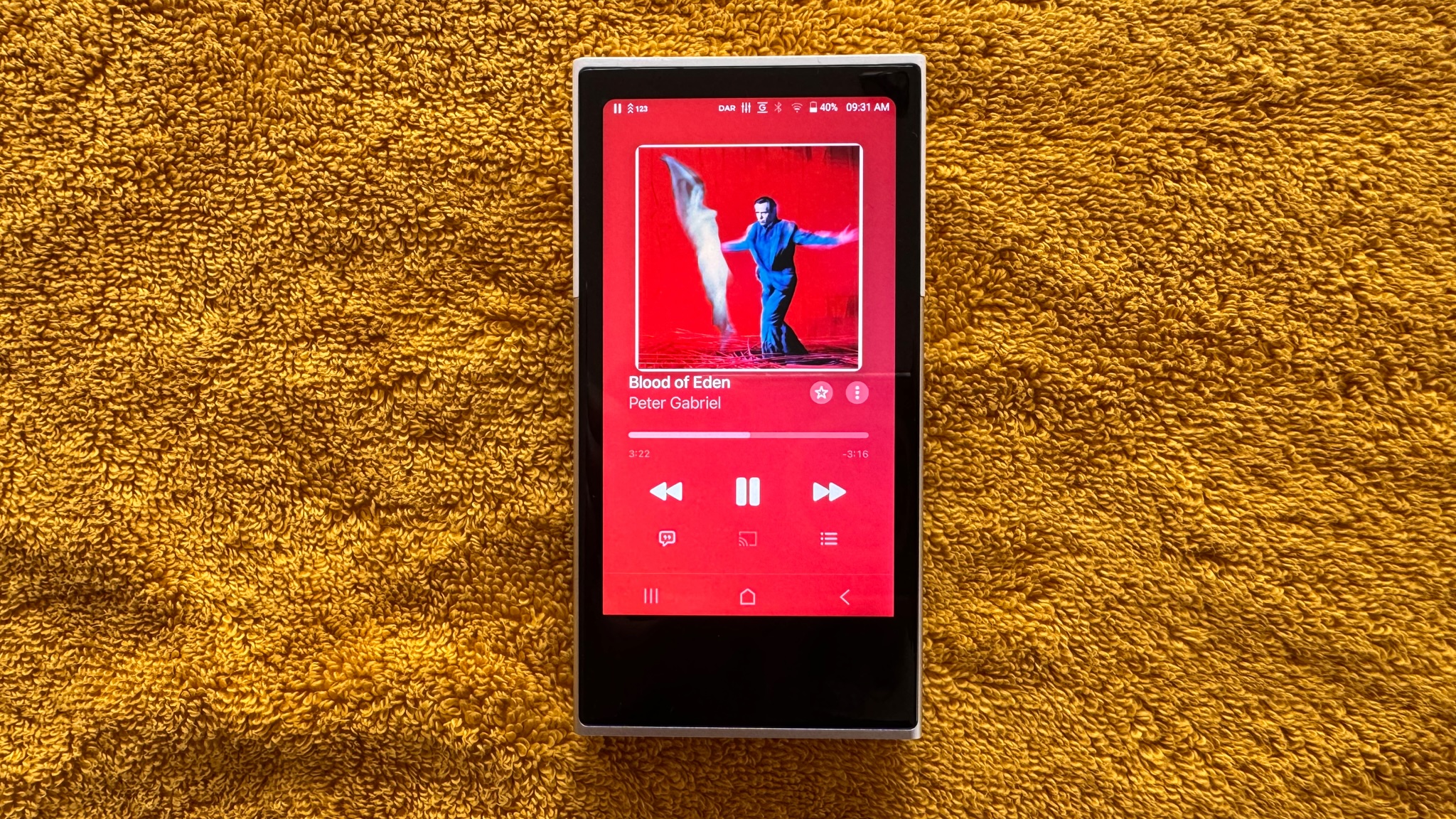
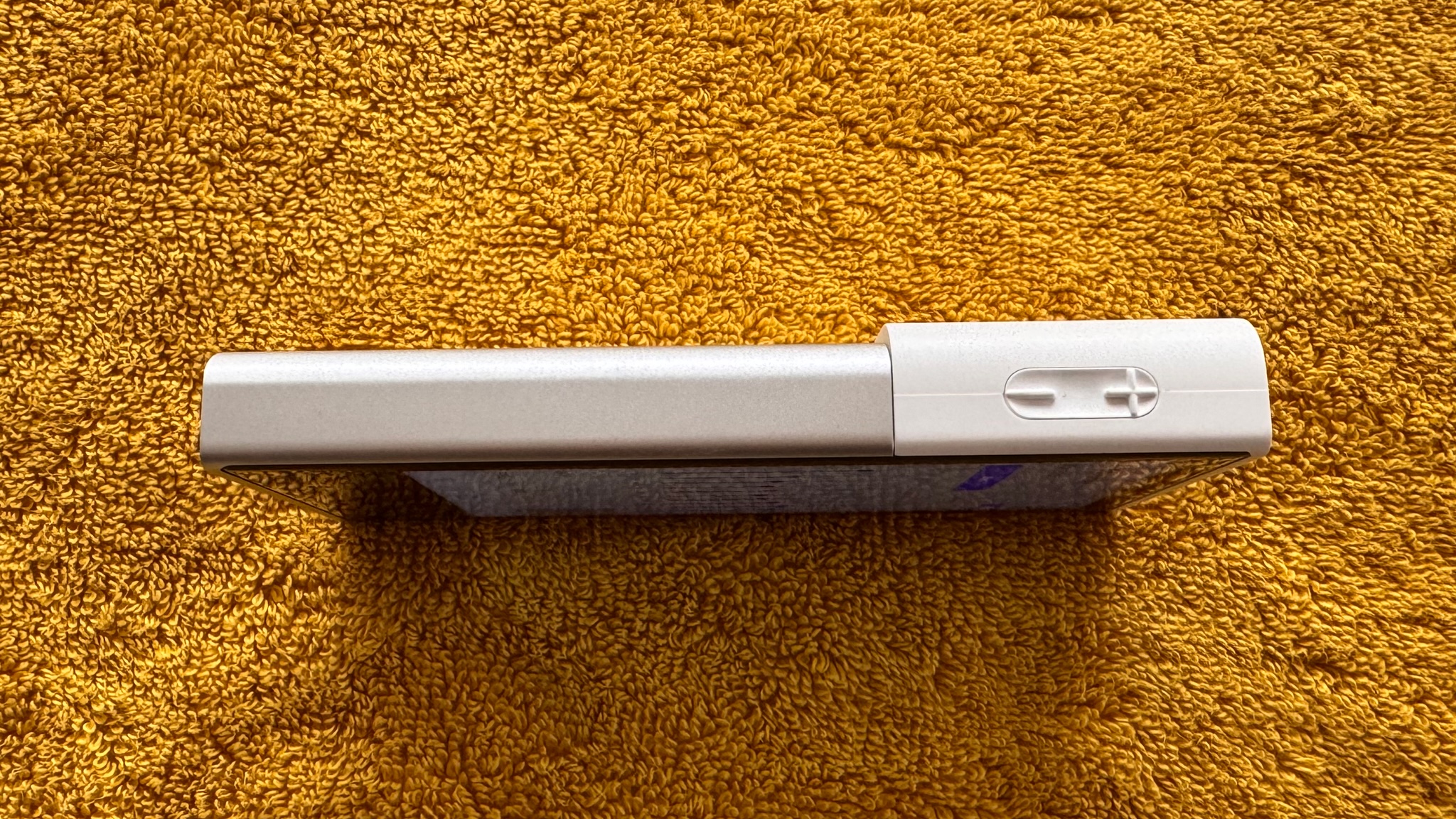

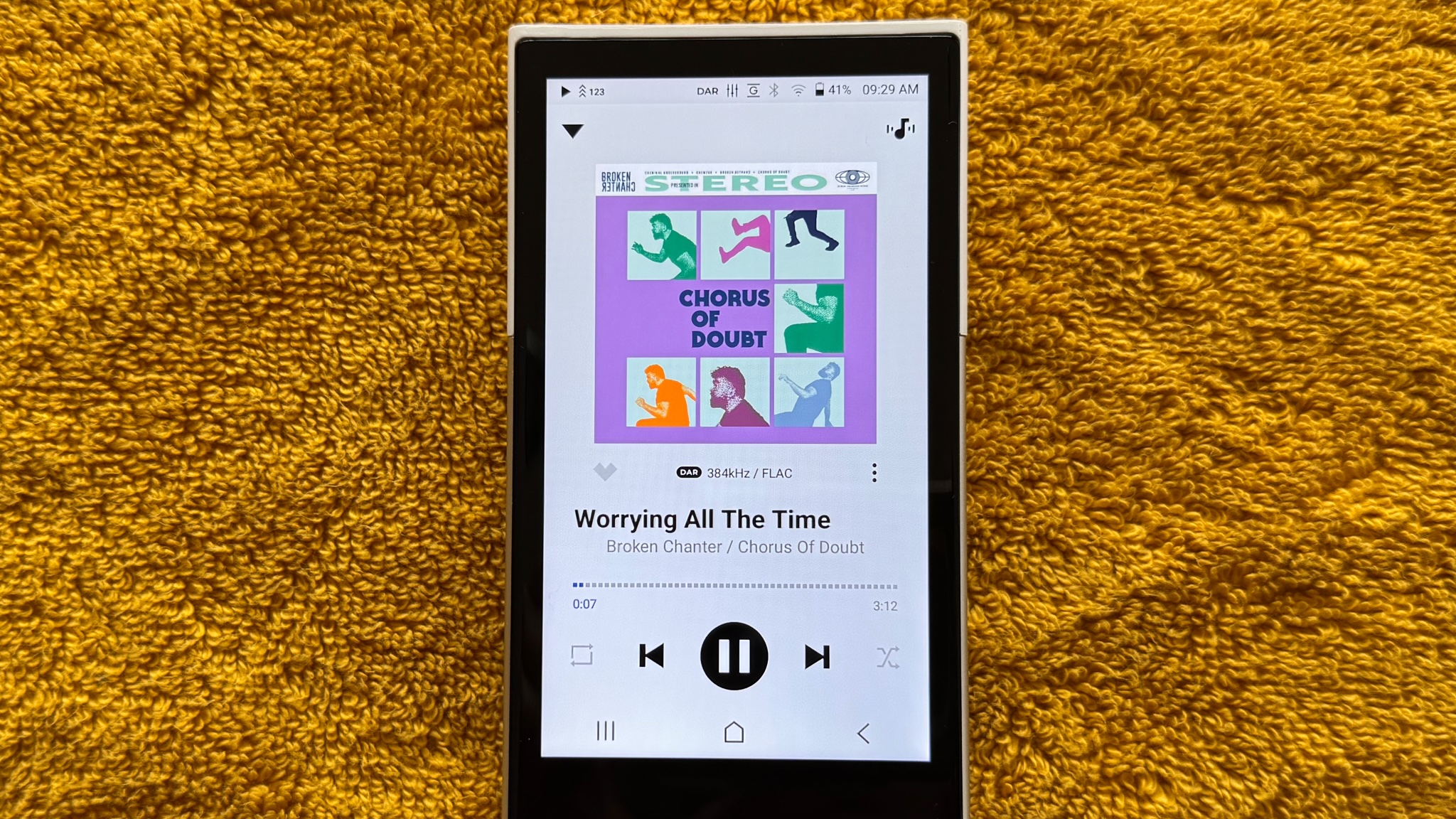
Specifications
Reasons to buy
Reasons to avoid
✅ You want high specs at a low price: If your budget can't stretch to the higher-end players, you'll be happy with this one.
✅ You've already got great headphones: Yes, this applies to most devices in this guide but you'll get the best experience from good headphones.
❌ You want to use AirPods: Apple headphones won't play nice with the supported audio formats.
❌ You're a Spotify subscriber: This player is only as good as its source material, and right now Tidal and Apple Music are much better streamers.
We really like this July 2024-release player, from Astell & Kern's audio subsidiary brand, Activo. The things much pricier A&K players can do that the Activo P1 can’t aren’t deal-breakers, unless you’re far into your audiophile journey. So if you're looking for the best all-rounder that'll suit most people, this is it.
It doesn't look as expensive as its parent brand's players but it's what's inside that counts, and under the hood the P1 is very good. It's got the same amplification as more expensive players and an ESS ES9219Q SABRE Dual-DAC.
The most important thing is how it sounds, and in that department it's more than deserving of the full five stars: the sonic performance is outstanding when used as a DAP, and in DAC mode it's a useful audio upgrade for your computer. You can craft complex EQ curves but during our testing we tended to leave well alone – the P1 sounded so good without our tweaks.
In addition to its local playback, the P1 also works with the best music streaming services and includes full Play Store support. Any downsides? Two: it runs hot, and it is a little slower to start up than players selling for double, triple or quadruple the price. But if those small shortcomings don't worry you, this is a great player.
And if you're agonizing over which headphones to use, we've got you. Activo launched the Q1 in-ears to go with it at the end of 2024 and our full Activo Q1 review is glowing about them – and the sound profile combines superbly with the player.
Read our full Activo P1 review
The best entry-level model
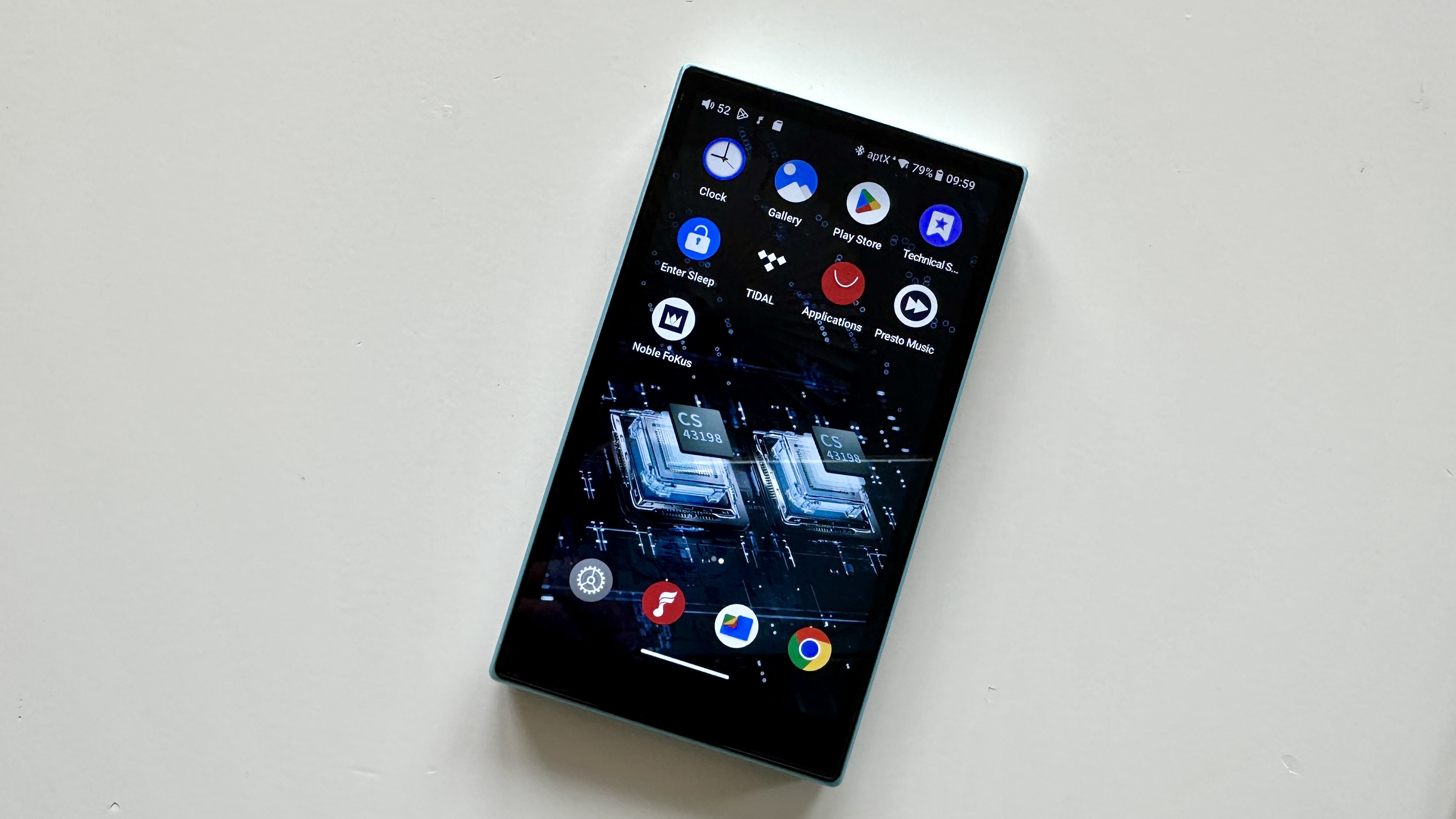
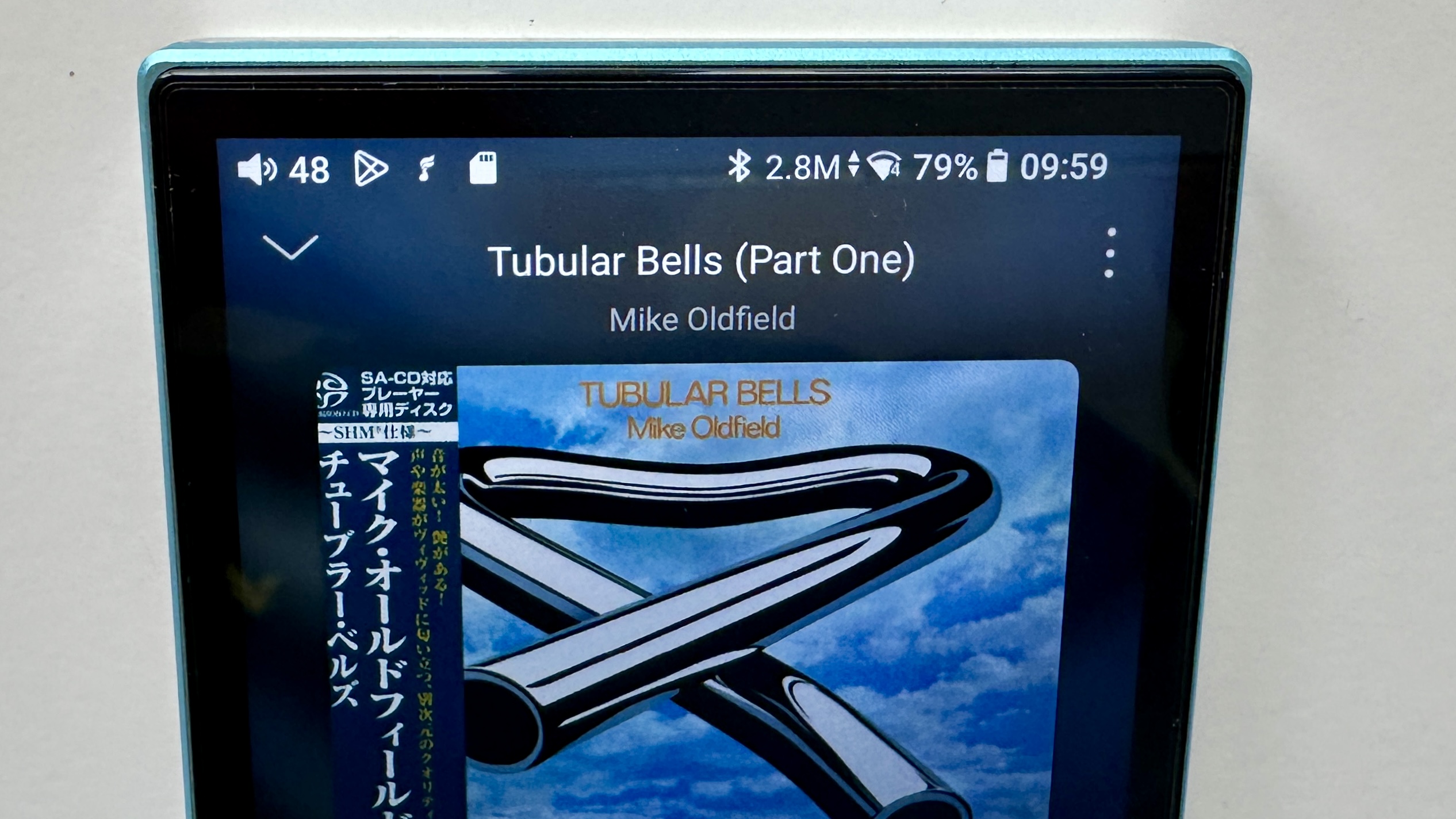

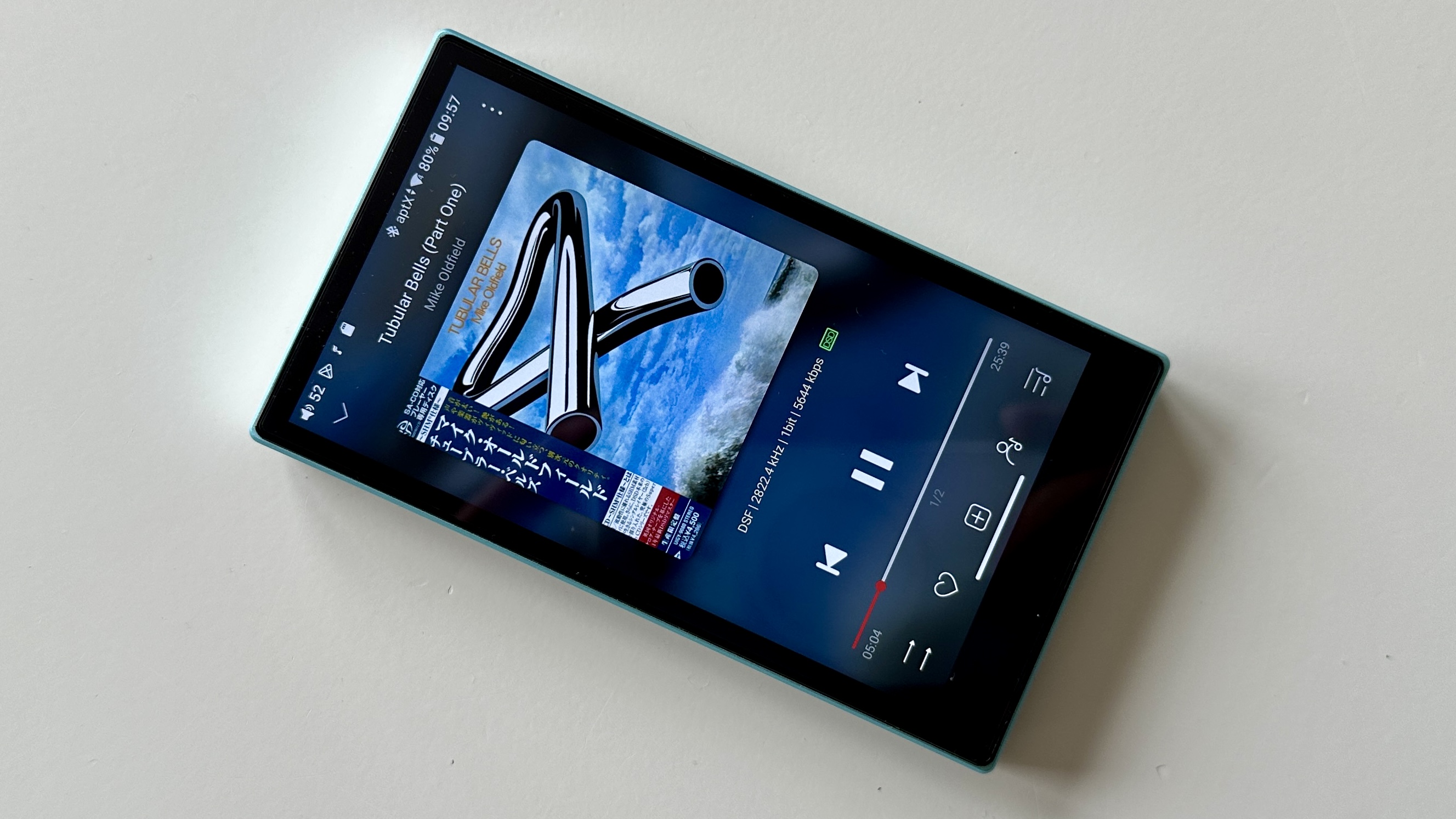
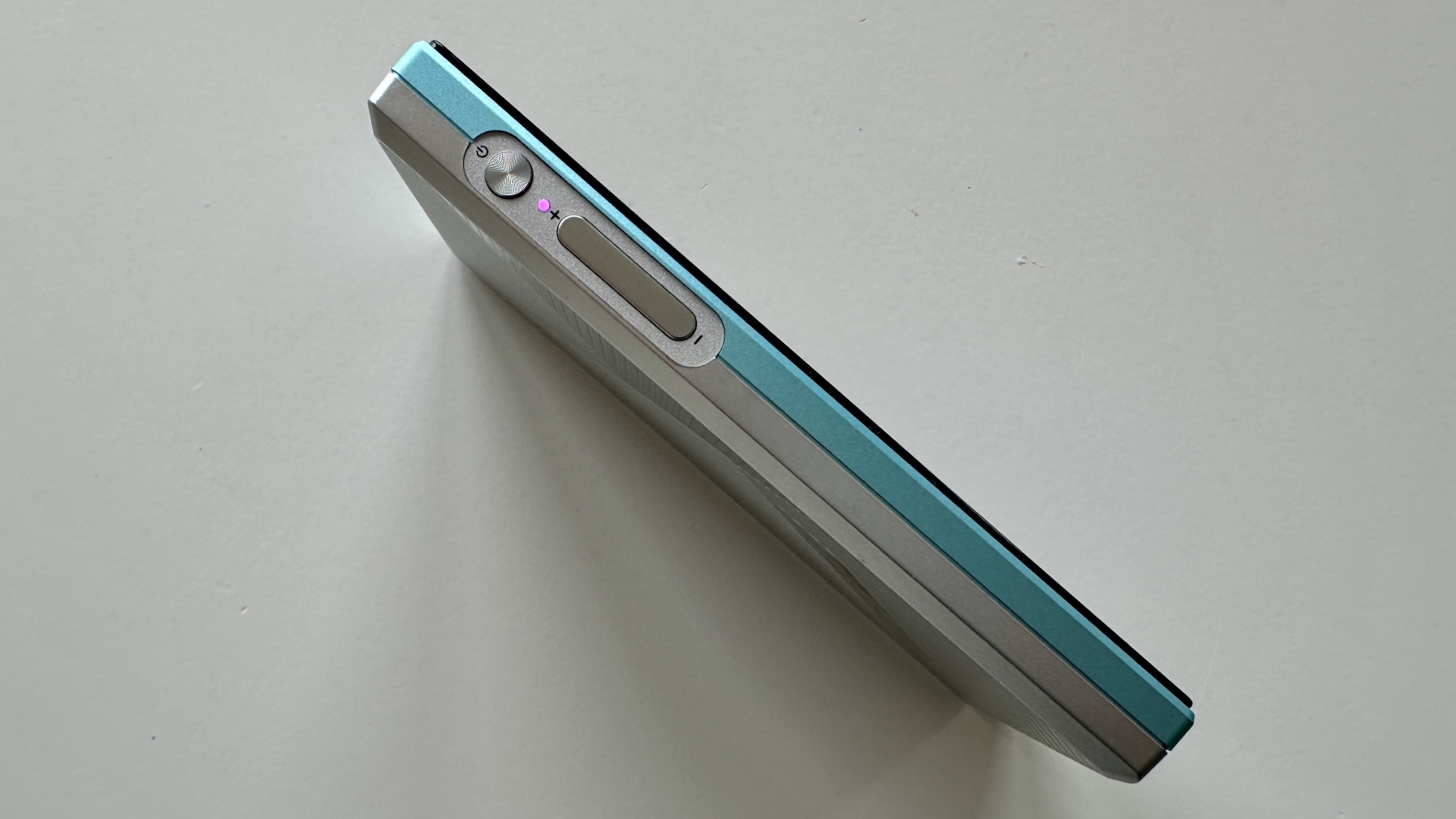
Specifications
Reasons to buy
Reasons to avoid
✅ Small and cheap are your top priorities: Some rivals are just as compact, but none are also this affordable.
✅ You like a good value device: Sure, other options might sound better, but for price this player represents truly outstanding value.
❌ You don't want to bump up the storage with a microSD card: There's not much room on-board, you really do need that microSD card.
❌ You like to listen loud: You'll use some of the audio quality if you insist on cranking up the volume too high.
The FiiO JM21 has completely redefined entry-level audio players, both in performance and build quality. If you're on a budget, this is hands down the best choice.
Compact yet impressively premium, it features a high-quality plastic and aluminium build with a stylish two-tone design. Weighing just 156g, it’s lightweight but solid. Despite its price, it packs twin Cirrus Logic CS43198 DACs, supports 32-bit/384kHz and DSD256, and includes high-performance op-amps in a fully balanced layout. Connectivity options include 3.5mm and 4.4mm balanced headphone outputs, with the 3.5mm jack doubling as an SPDIF output for external DACs. The USB-C port handles both data transfer and charging.
With over 12 hours of battery life, it outperforms most entry-level players. Storage is limited to 32GB (22GB usable), but the microSD slot supports up to 2TB, solving that issue.
Sound quality is superb for the price, detailed, and well-balanced, with an impressively wide soundstage. While the audio can lose some dynamic variations at very high volumes, this won’t be an issue for most listeners.
For the money, nothing comes close. A Sony equivalent costs nearly twice as much. If you want affordable high-res audio without compromise, this is the one to buy.
Read our full FiiO JM21 review
The best step-up model
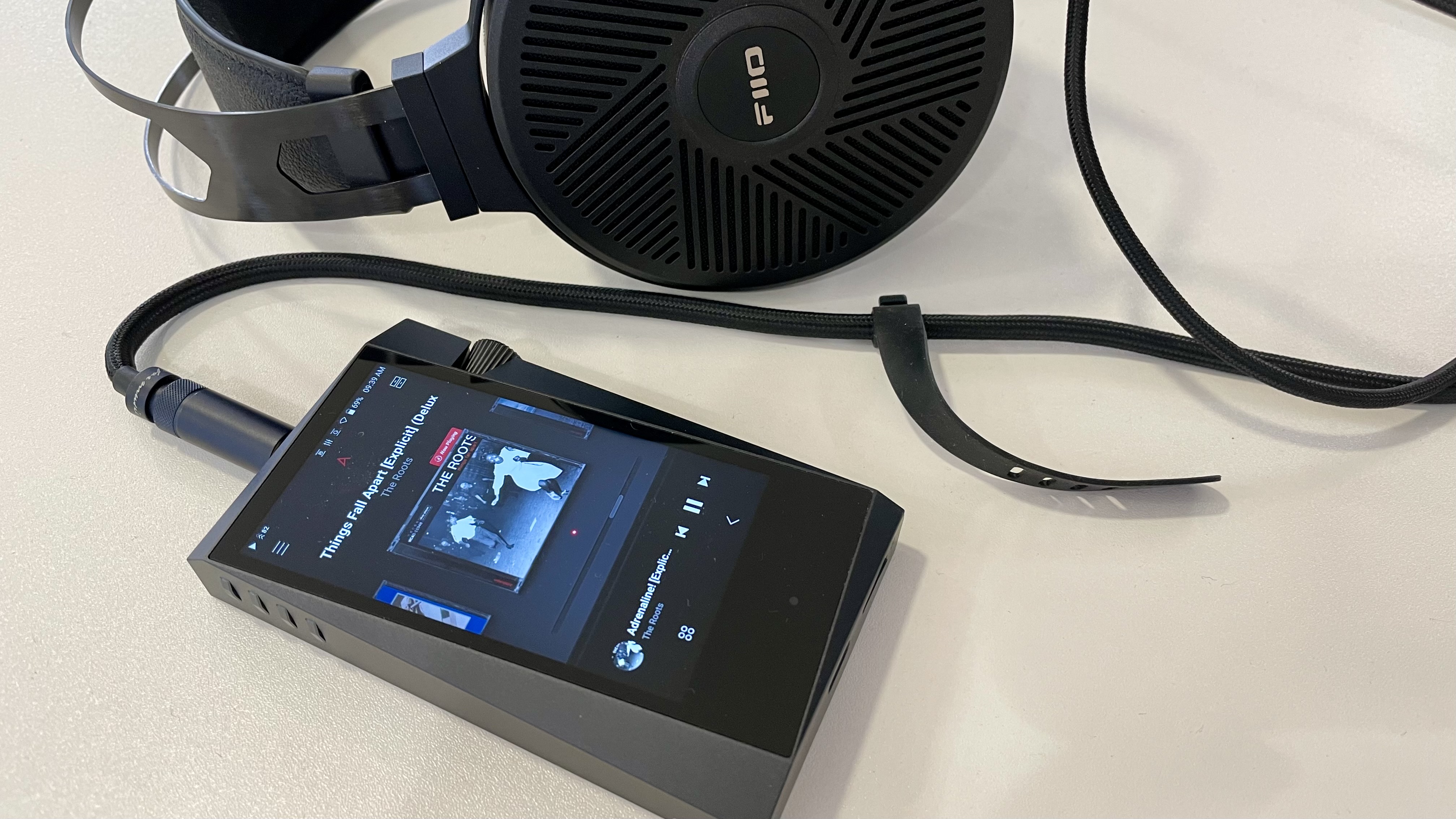
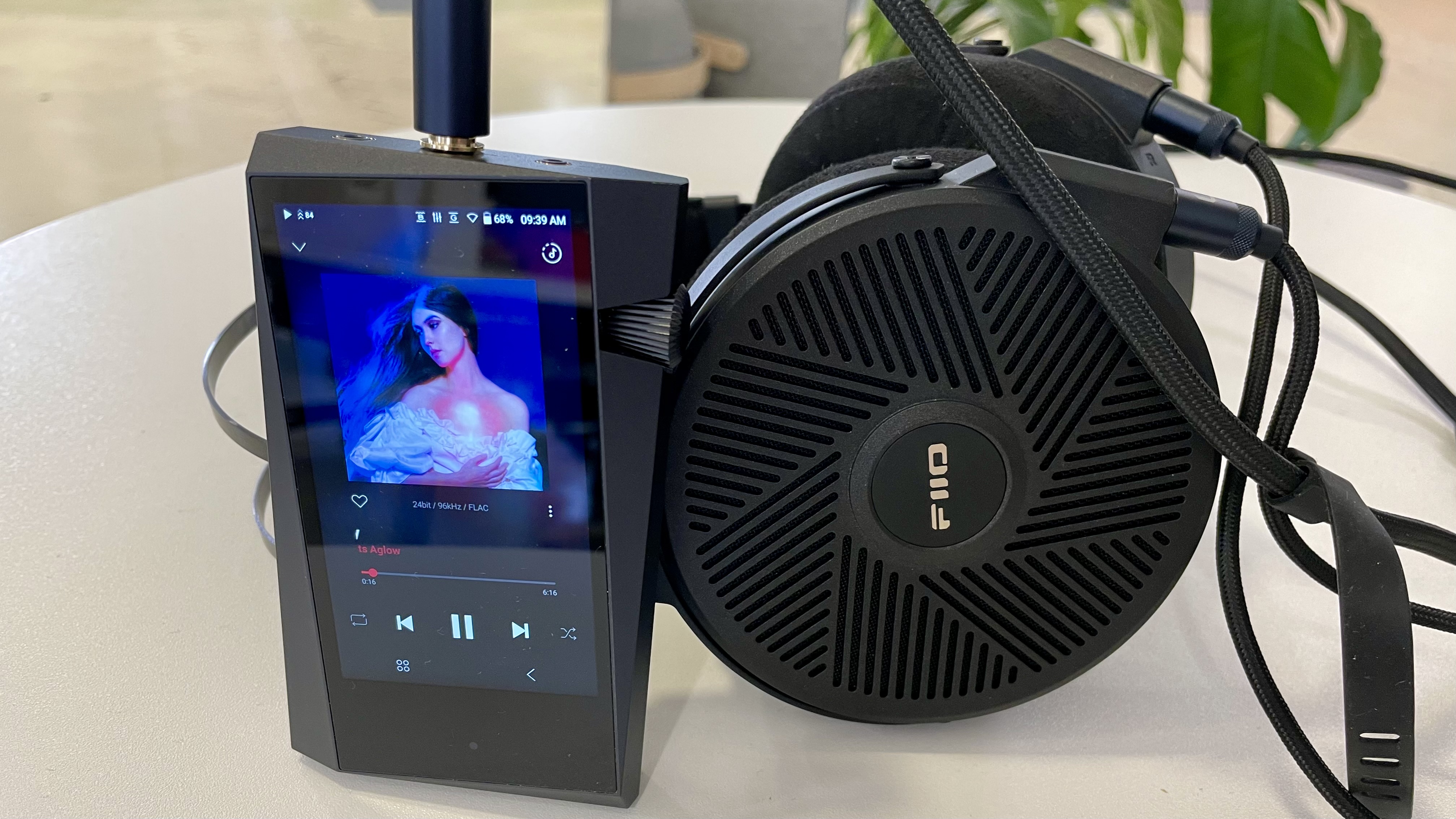


Specifications
Reasons to buy
Reasons to avoid
✅ You like the look and feel of high-end tech: Using this MP3 player and feeling it in your hand is a luxury experience and we can't get enough of it.
✅ You have small fingers and good eyes: The 3.6-inch touchscreen looks great, but it's fairly small compared to rivals.
❌ You're not willing to get a great pair of headphones: You'll get the best experience from a pair of accomplished and (sorry) expensive headphones.
❌ You want a slim and compact player: This option isn't big, exactly, but you'll find a more streamlined design elsewhere.
Look, however much Astell & Kern wants to believe this is an 'entry-level' player, it's not – it is really quite expensive. Astell & Kern doesn't typically provide budget options (it has the Activo for that), and it's $100 (or around £150) more than Fiio's equivalent.
But the good news is that the premium nature of the SR35 applies to the specification, the sound quality and the user interface as well as the high ticket-price. It's an exceptional player. It's about the size of a deck of cards and at 184g it isn't the lightest DAP on the market, but all of the tech onboard is worth a few extra grams.
Also, while the SR35 deserves the best standard of content, it’s less fussy than many rival players. So while you should really be giving it all of the 24bit/192kHz FLAC files, this particular Astell & Kern will readily tolerate and deliver 320kbps Spotify streams better than most.
Whatever you're listening to, the sound this player is capable of is detailed and fun like you wouldn’t believe. Even the shortest listening sessions will become deep-dives into much-loved tracks, to see what this beauty of a DAP can do with them. So if you can afford to take a step up from the cheaper options in this guide, it'll be well worth the extra expense.
Read our full Astell & Kern A&norma SR35 review
The best-priced elite player

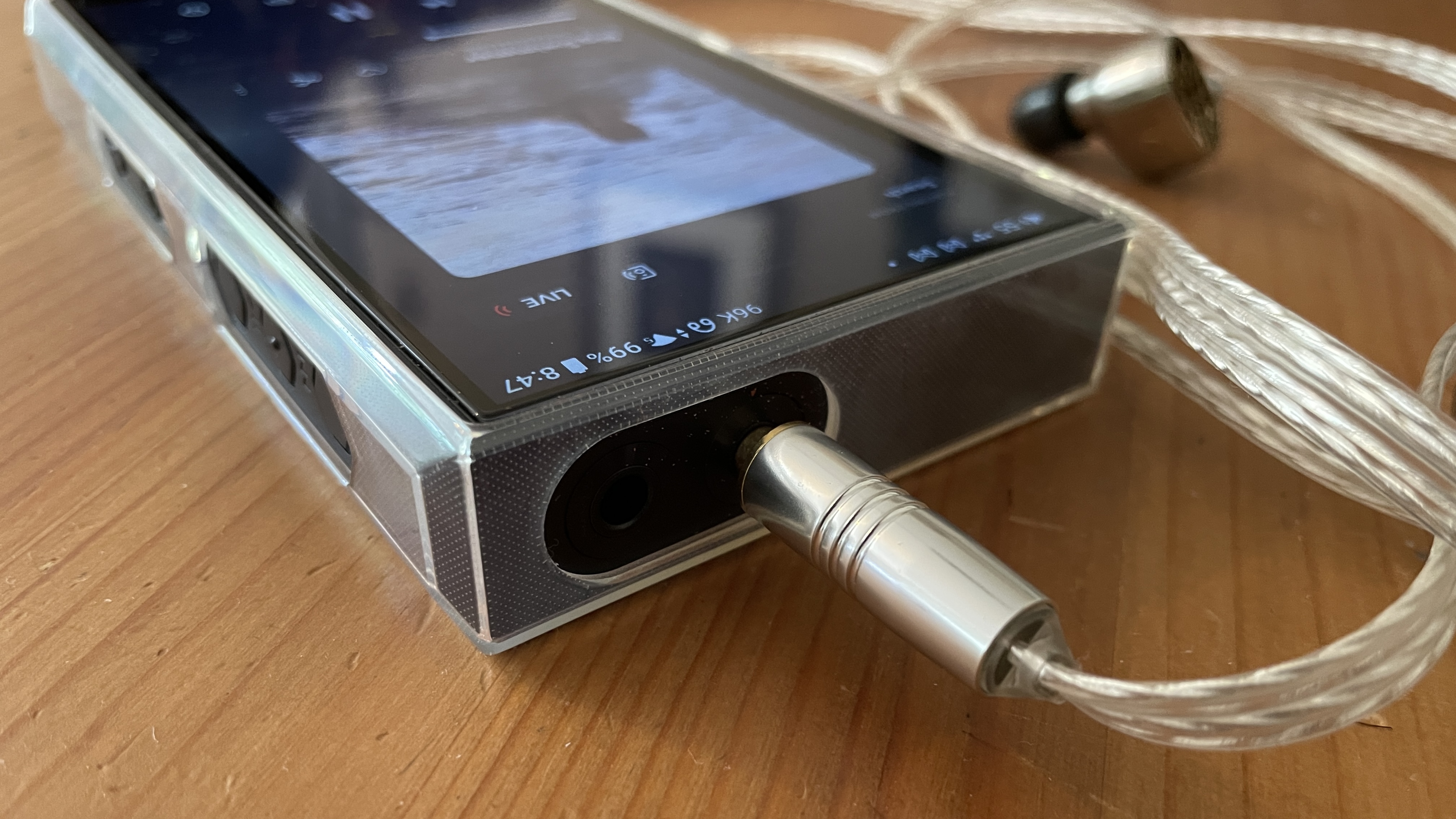
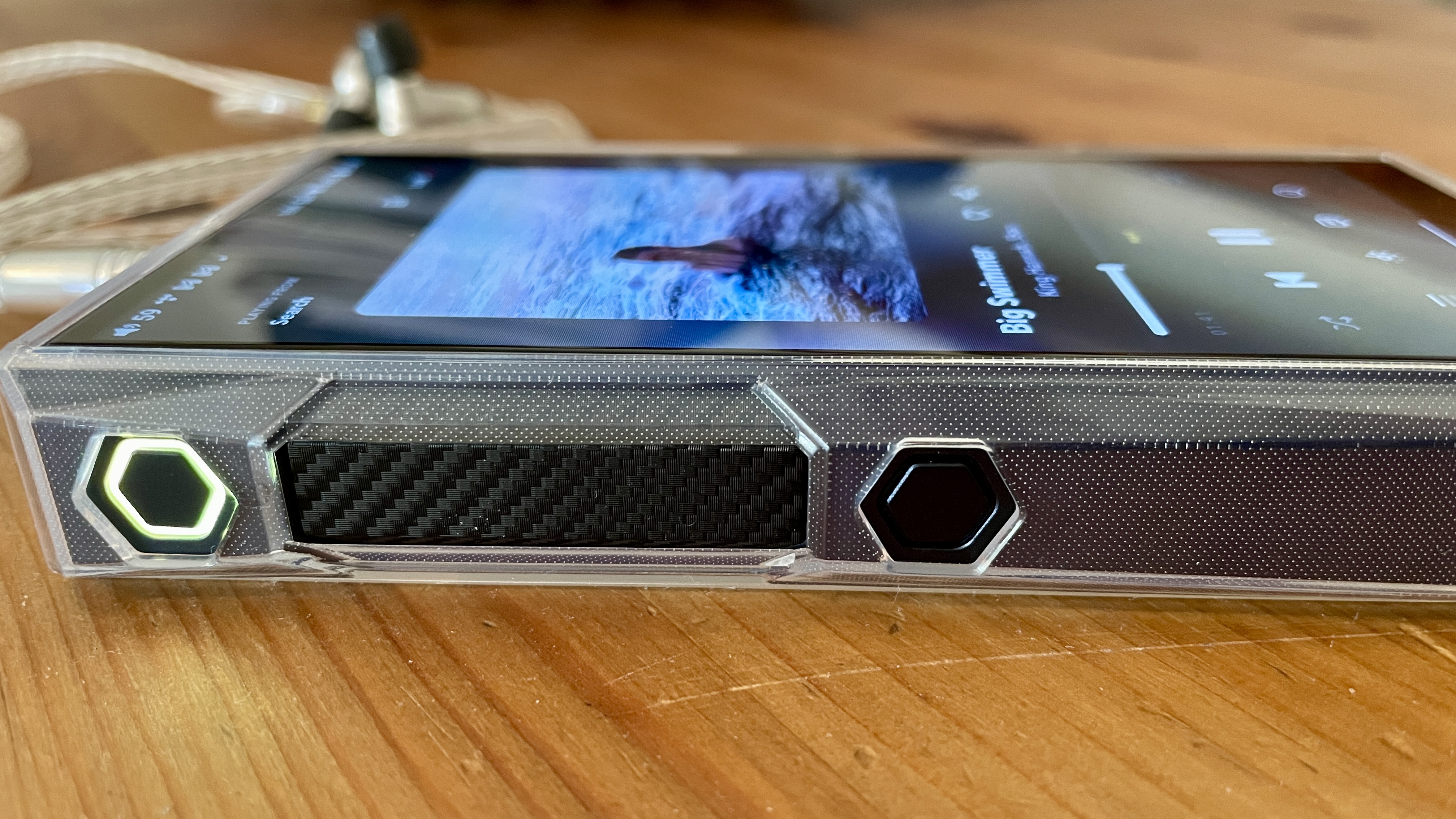
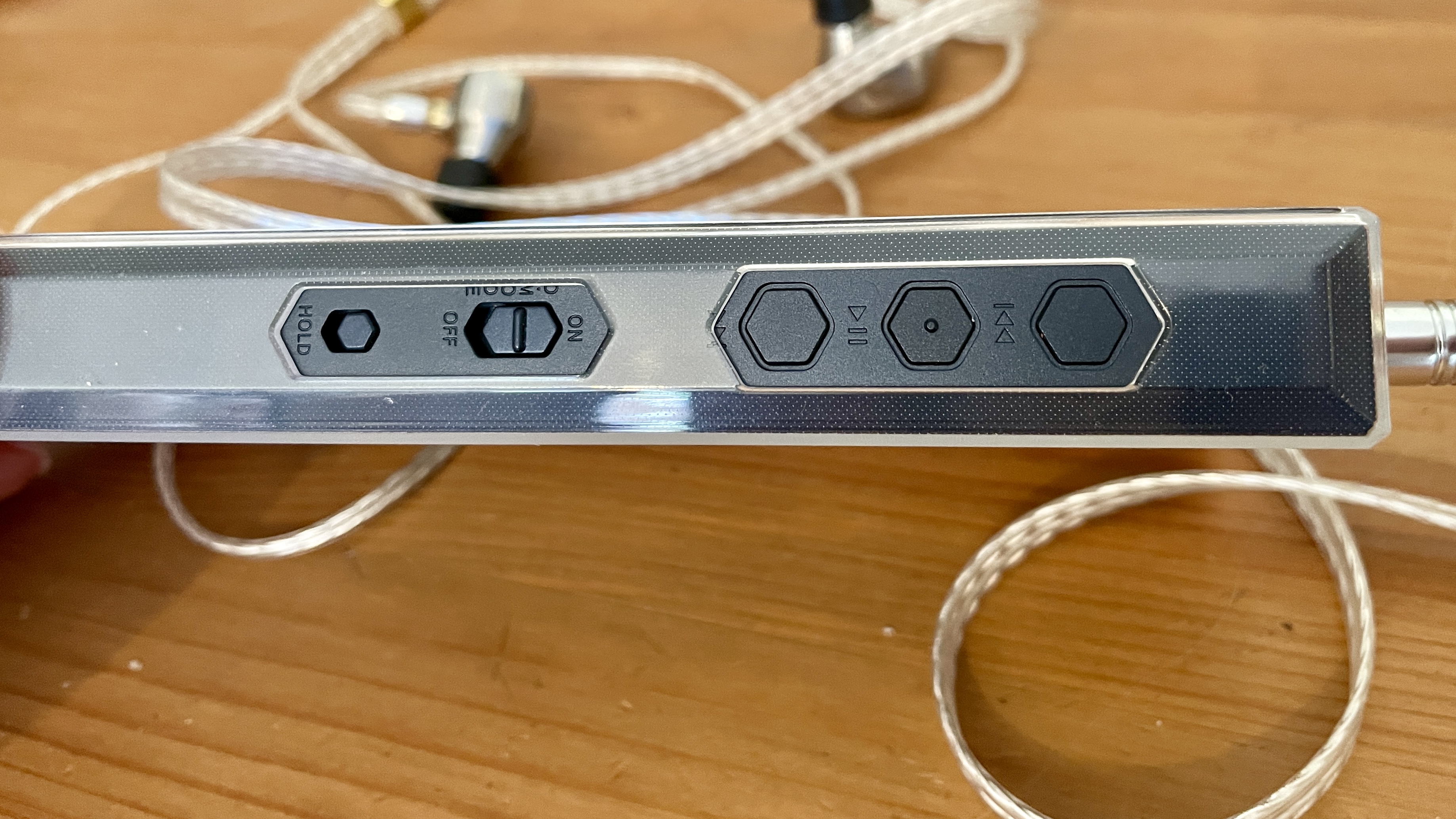
Specifications
Reasons to buy
Reasons to avoid
✅ You want a high standard of engineering: The build and finish here isn't exactly luxury, but it is a fantastic piece of tech.
✅ You want a fantastic all-rounder: Other choices in this guide do specific things better, but this one checks all the boxes.
❌ You want a flawless listening experience: Look, overall it sounds fantastic but we did notice some minor and occasional glitches.
❌ You want a small and portable device: It's not big, but it's not the most dinky or compact option in this guide.
Fiio has thrown absolutely everything it can at this high-resolution audio player in terms of specification; we've yet to find an audio file type it won't accept, handle, unpack and celebrate. Also, the design is solid but classy (if a tiny bit big at 299g), it's snappy in operation and, unlike some smaller players, its touchscreen is easy to use.
How does it sound? Minor (and certainly sporadic) audio playback trip-ups aside, this is an absolute audio beast of the highest caliber. In every circumstance and with every file-type and size we feed it, the M23 sounds assertive, muscular, lavishly detailed and vaultingly dynamic – but also refined and subtle. It's even prepared to tolerate lowly sub-16bit/44.1kHz content if you simply must. It works on amended version of Android (Android 12) and will happily load up your Tidal, Apple Music and Qobuz subscription apps via the Play Store.
It seems basically impossible to throw Fiio out of its positive, confident stride these days – and the fact that this excellent March 2024-issue player still can't be beaten is proof. If you're on the lookout for an elite MP3 player that's worth every penny, you've found it.
Read our full Fiio M23 review
The best budget Sony buy
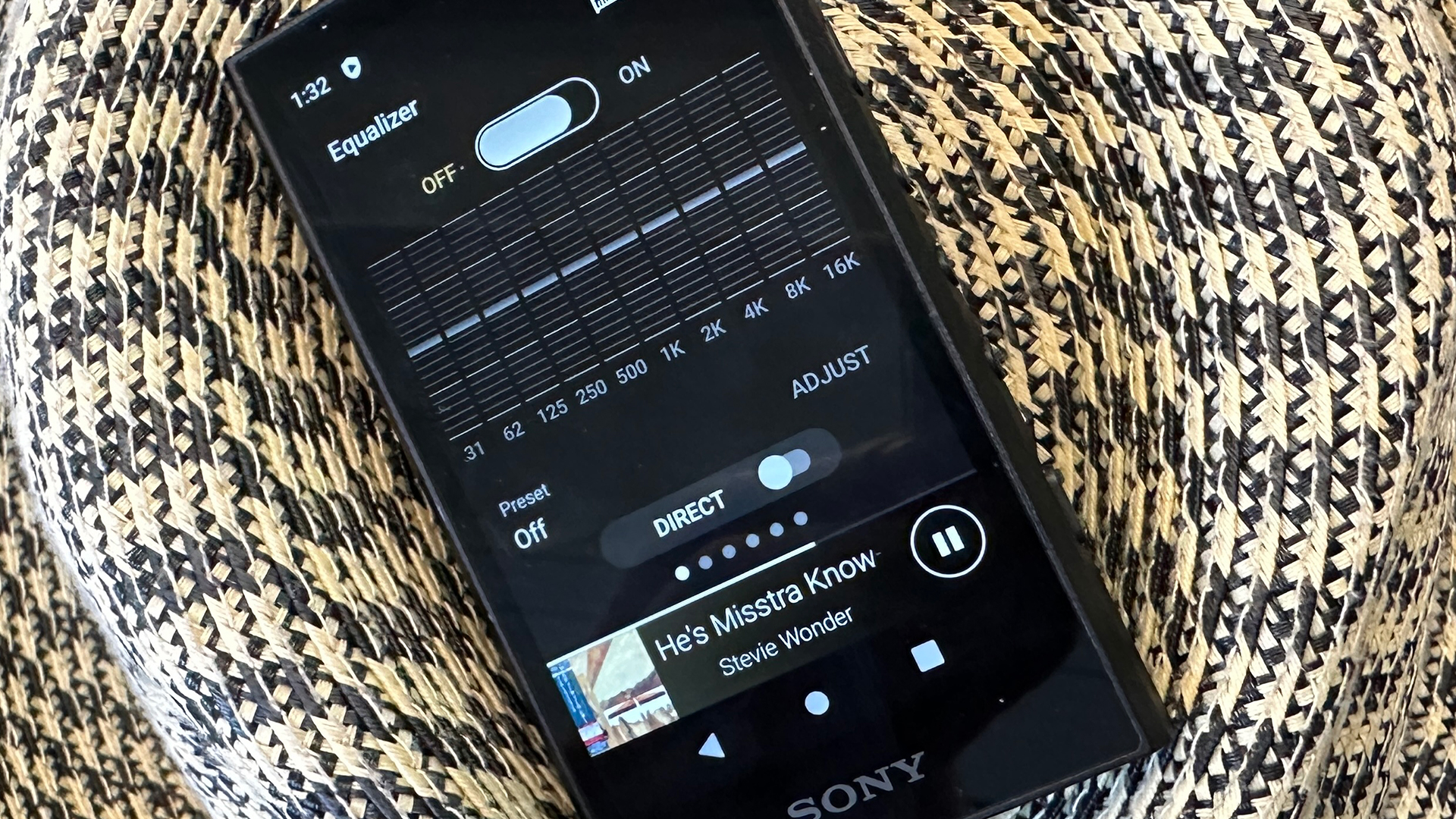
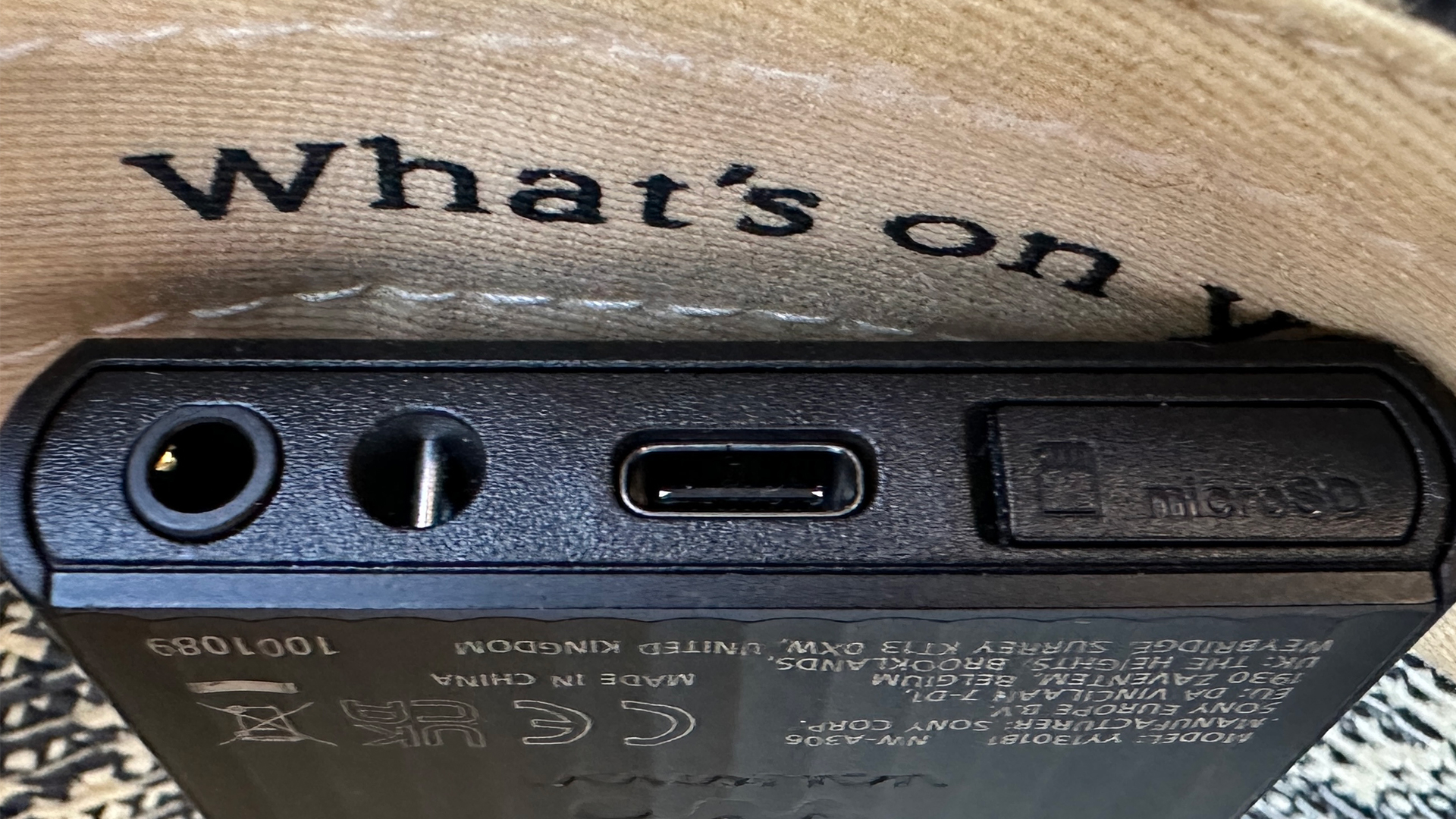
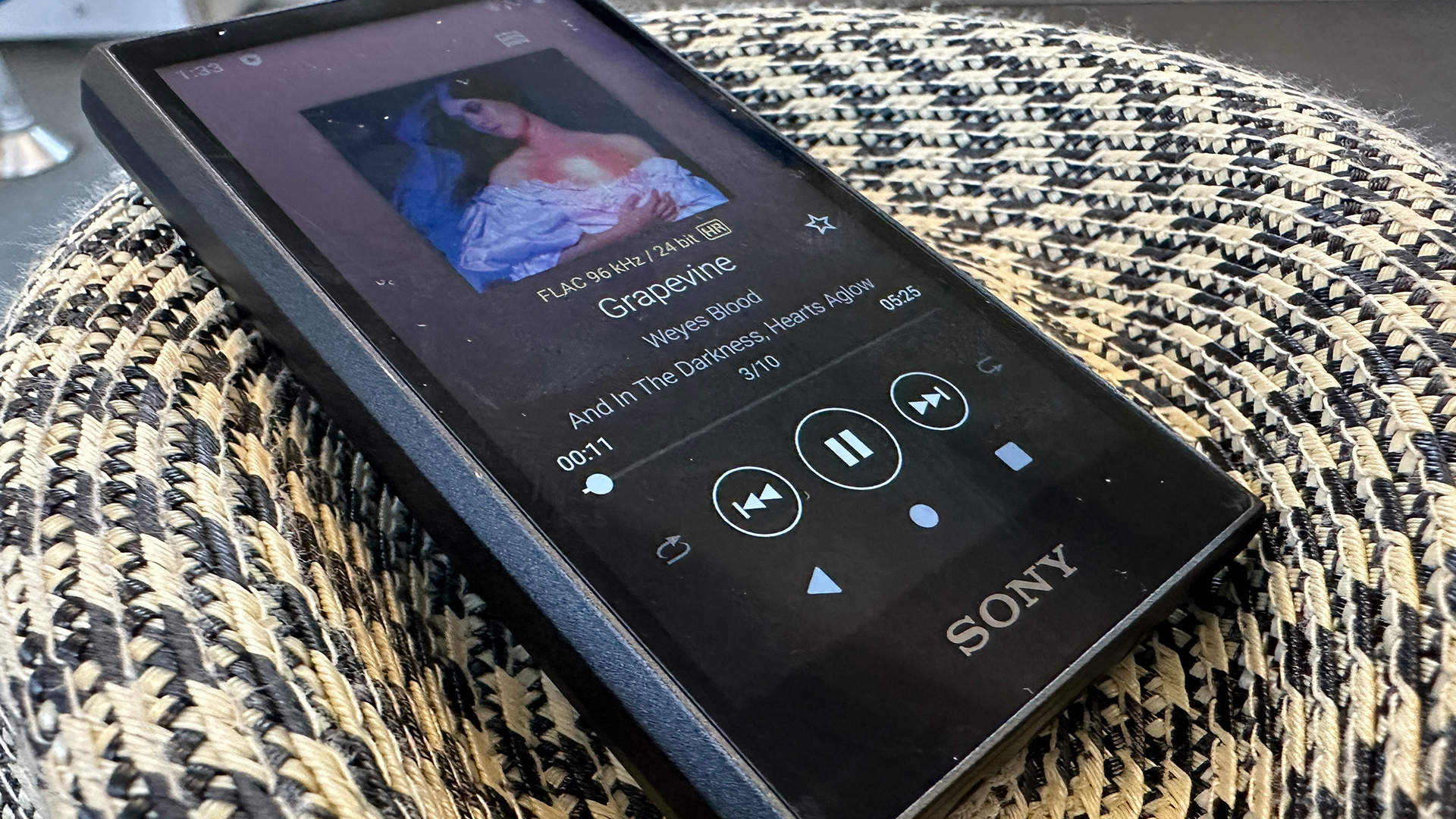

Specifications
Reasons to buy
Reasons to avoid
✅ You want hi-res for the lowest price: You'll get hi-res audio here but won't have to spend a small fortune for this entry-level offering.
✅ You want a light and compact option: It's a small and streamlined device you won't notice in most pockets.
❌ You want all your hi-res audio with you: The internal memory storage here is especially small – though you can buy a Micro SD card.
❌ You want a premium look and feel: It's an affordable option and it feels it, especially when it comes to the screen which could be more responsive.
Not only is this plucky little player part of Sony’s Walkman lineup, it’s built to handle incredibly high quality audio files for a price that is much more palatable than rivals. The Sony NW-A306 was released in 2023 and we’re so thankful that Sony decided to make a comeback with this admittedly nostalgic audio device.
Where the NW-A306 is let down is not in its music-playing skill, but in the niggles with its usability. The menu can be a little unresponsive, the battery longevity can vary and, surprisingly, it occasionally struggles when playing a standard 128kbps audio file, which is why we we forced to adjust our star rating under intense review. But there’s no denying that the positives vastly outweigh the negatives here.
If you’re looking for a dedicated hi-res audio player, the Sony NW-A306 boasts an impressive spec sheet straight from the box. It supports audio files far above CD quality – and more than that, it really shines with them. It also has a slim design that can fit in your pocket, which is rare.
Read our full Sony NW-A306 review
The best mid-range player for features

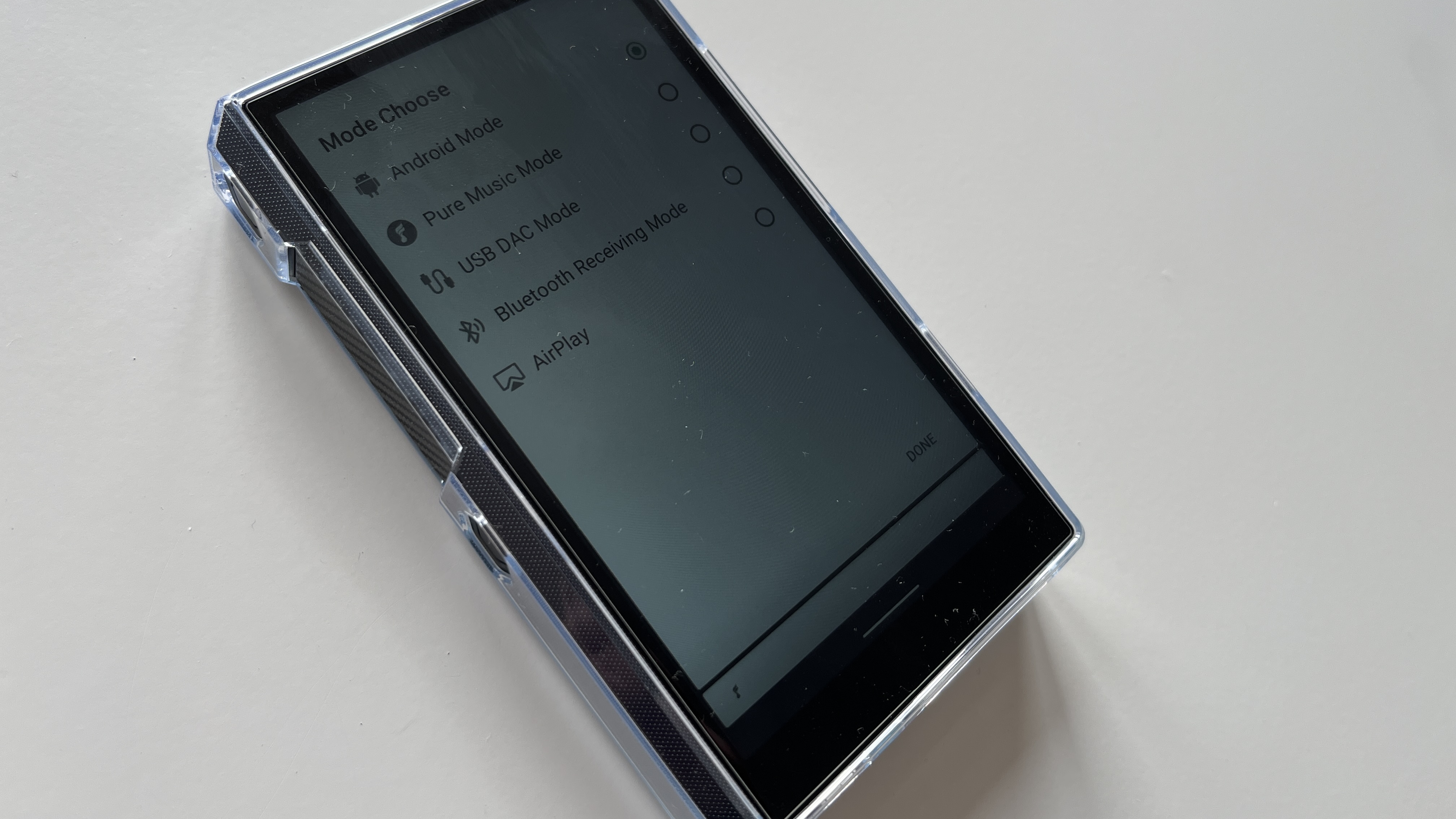
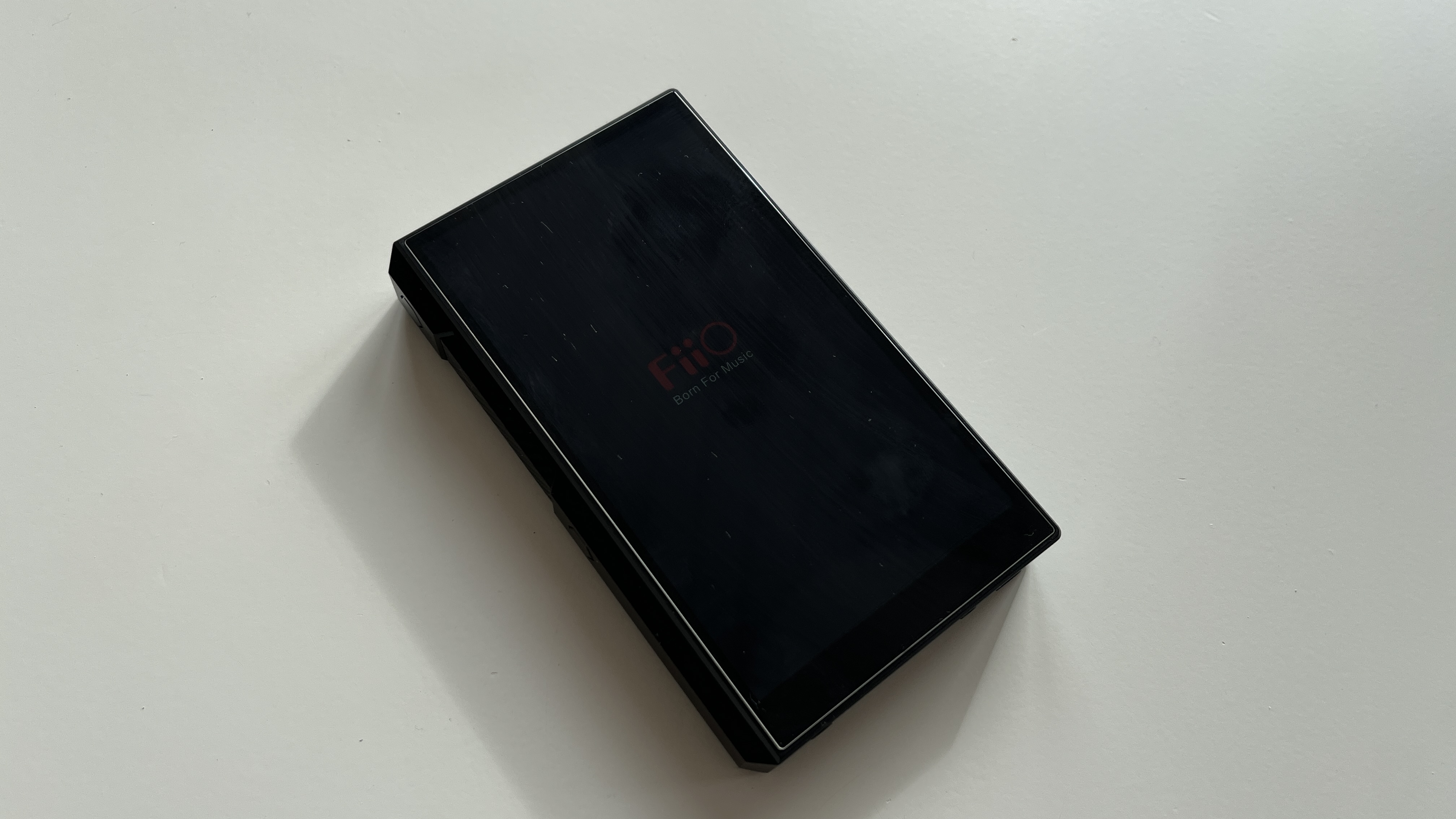
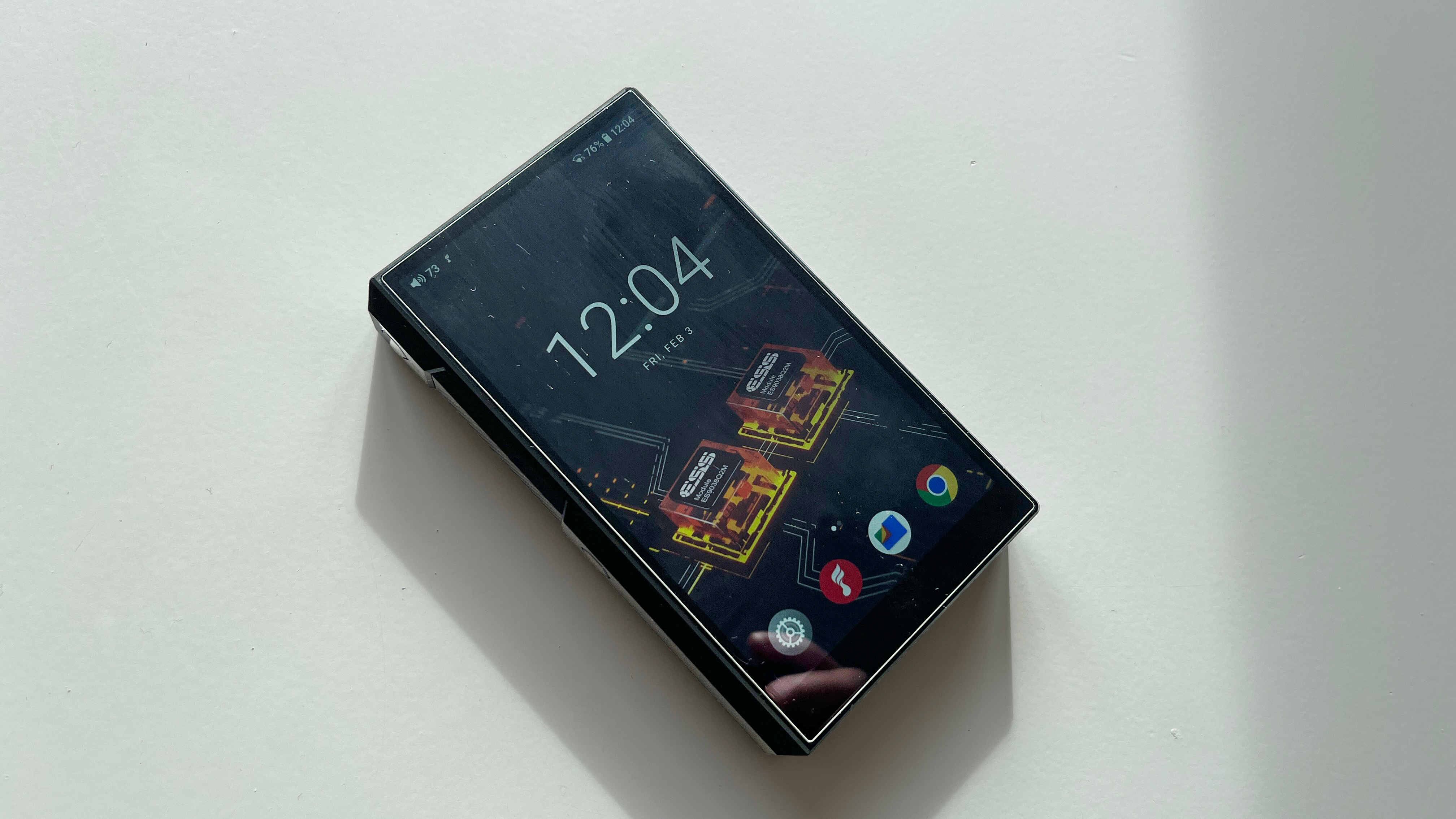
Specifications
Reasons to buy
Reasons to avoid
✅ You want high-end tech on a budget: This is one of the more affordable picks in this guide, but you're still getting a great player.
✅ You're happy to use wired headphones: Yes, you can use wireless headphones but wired ones will give you an infinitely more pleasing experience.
❌ You have small pockets: It's not huge, but it's not the most compact choice either.
❌ You want it for long listening sessions: Battery life might not be bad here, but it's only average.
You don’t have to listen for long to realize the M11S is the genuine article. In every meaningful music-making respect, it's got skills – in some areas, it’s a certified expert. It's been superseded by the M23 higher up this list, but don't let that put you off.
The M11S is intuitive enough to make trifling or often transient information apparent, and it can relay the most nuanced and delicate variations in a solo instrument with ease. It has more than enough headroom to dispatch bigger shifts without issue and it faithfully describes big, wide and properly defined soundstages. The treble is perhaps a little on the bright side, but we wouldn't consider it a fault – it's our job nitpick and here, we have noted it.
There's lots to love here including an Android 10 operating system, a touchscreen that's smooth and responsive, a punchy yet controlled and detailed sound and a resoundingly classy build.
The Fiio M11S does an excellent job of gently undercutting its closest rival, the Astell & Kern A&norma SR35. Not to nudge you either way, but it's easy to look at the saving you'll make here and decide it's worth putting into a nice high-capacity microSD card, instead of its pricier rival.
Read our full Fiio M11S review
The best money-no-object MP3 player
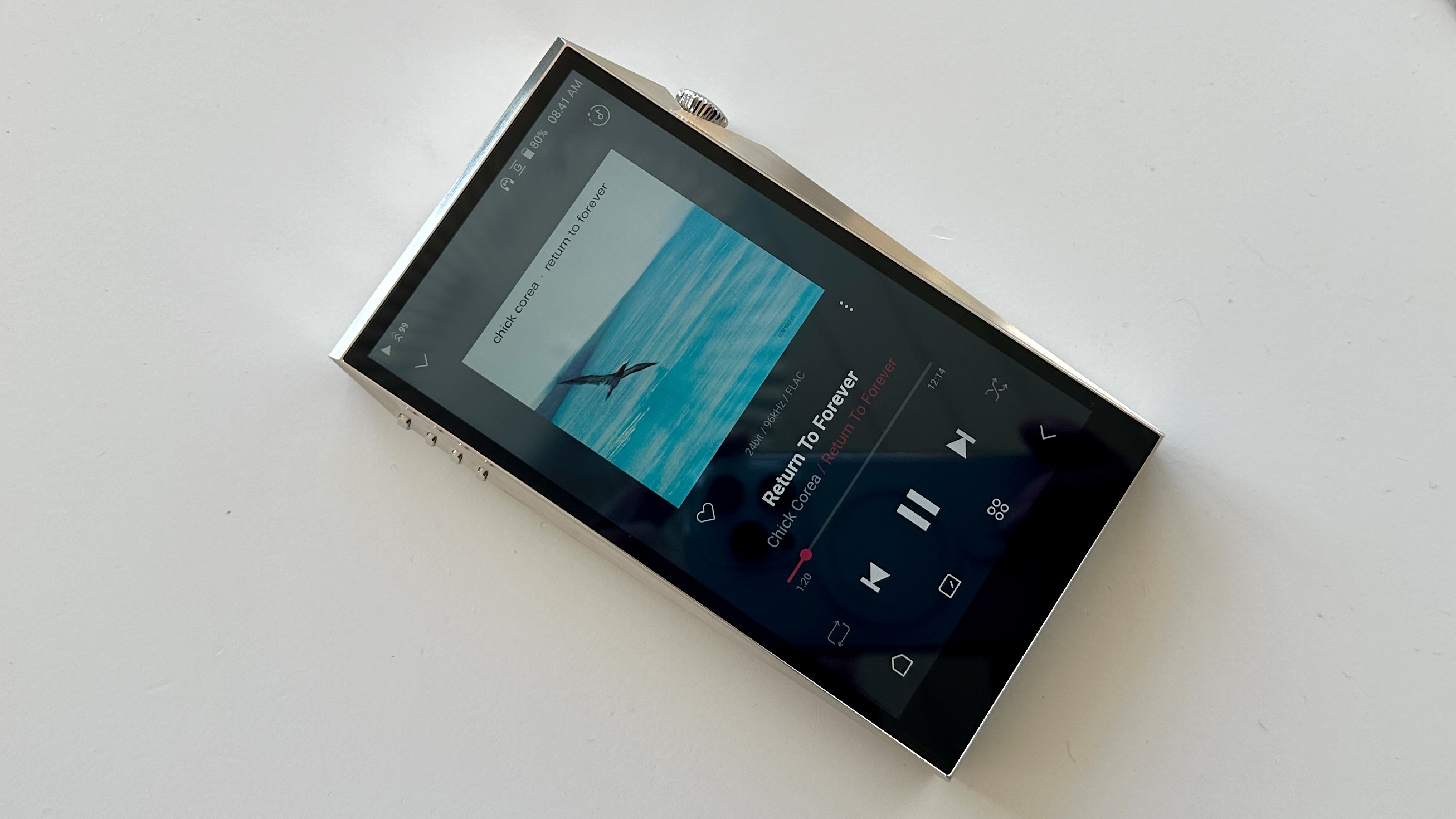

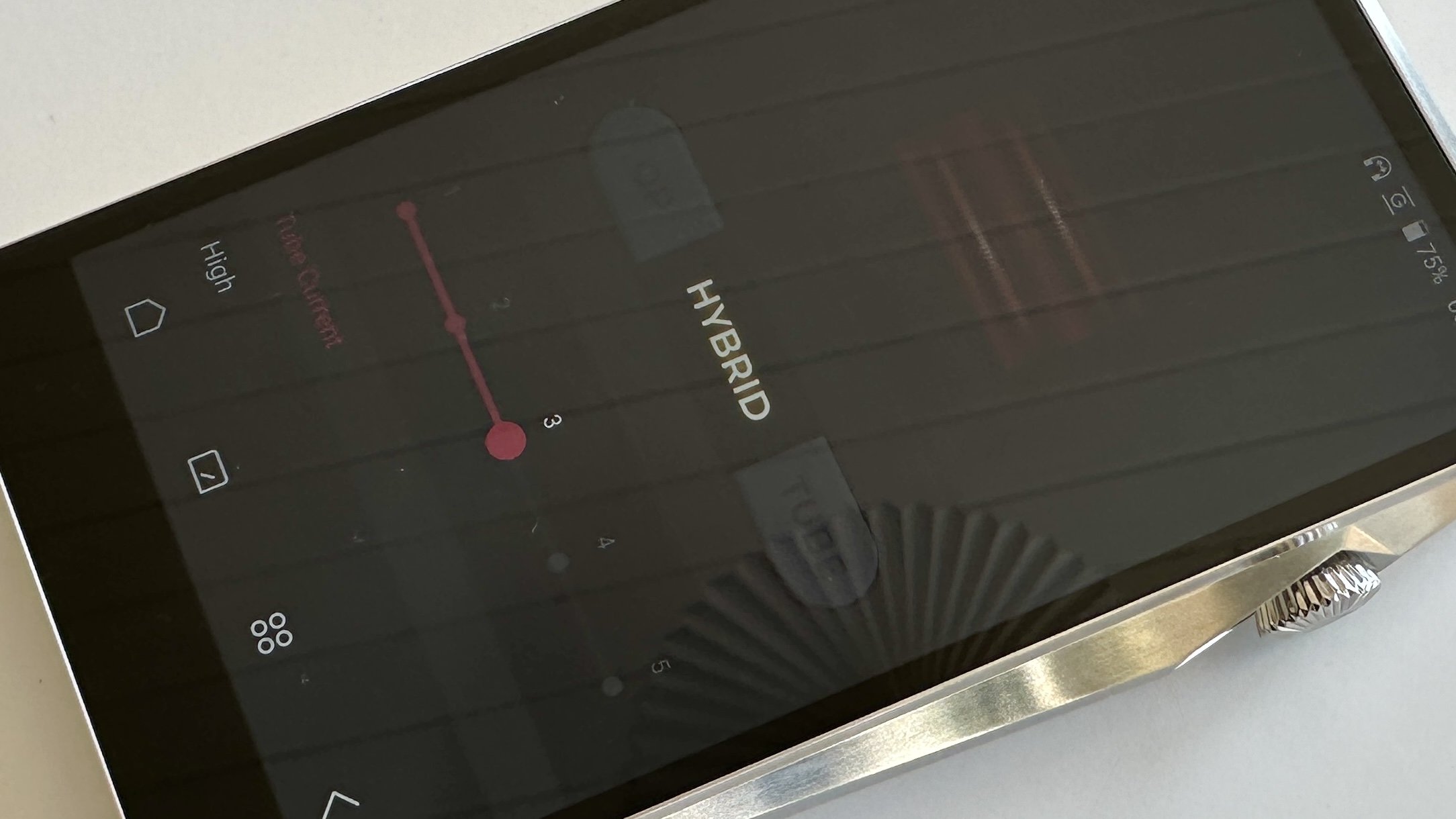

Specifications
Reasons to buy
Reasons to avoid
✅ You only want the best: It's high-end and expensive but oh boy does it almost justify that eye-watering price.
✅ You don't mind a bigger device: You'll need sturdy pockets as this is a weighty and chunky player, at least compared to rivals.
❌ Longevity is a priority: If you want to listen to hi-res files for long periods of time the battery probably isn't going to last.
❌ You're vegan: The case is made from calf leather. No, we don't know why that's really necessary either.
We awarded the Astell & Kern SP3000T a rare 5-star rating in our review. Because despite the fact this is an incredibly expensive music player, it's one of the best we've ever tested.
As you might expect, the Astell & Kern SP3000T sounded incredible. In our review, we wrote that it delivers "an energetic, entertaining listen that prioritizes the enjoyment of music over the minutiae of how it’s been recorded." It's also worth mentioning that although the biggest audio files perform the best, this MP3 player makes the most of the files you give it and the headphones you use.
Not only does it sound fantastic, the Astell & Kern A&ultima SP3000T looks premium. It’s made from silver-plated stainless steel, controls are beautifully implemented and it has a stable and logical operating system. Everything about this MP3 player delivers a premium experience, from the way it sounds and handles to how it looks. If money is no object and you want only the best sound, this is the MP3 player you need.
Read our full Astell & Kern A&ultima SP3000T review
The best MP3 player for design
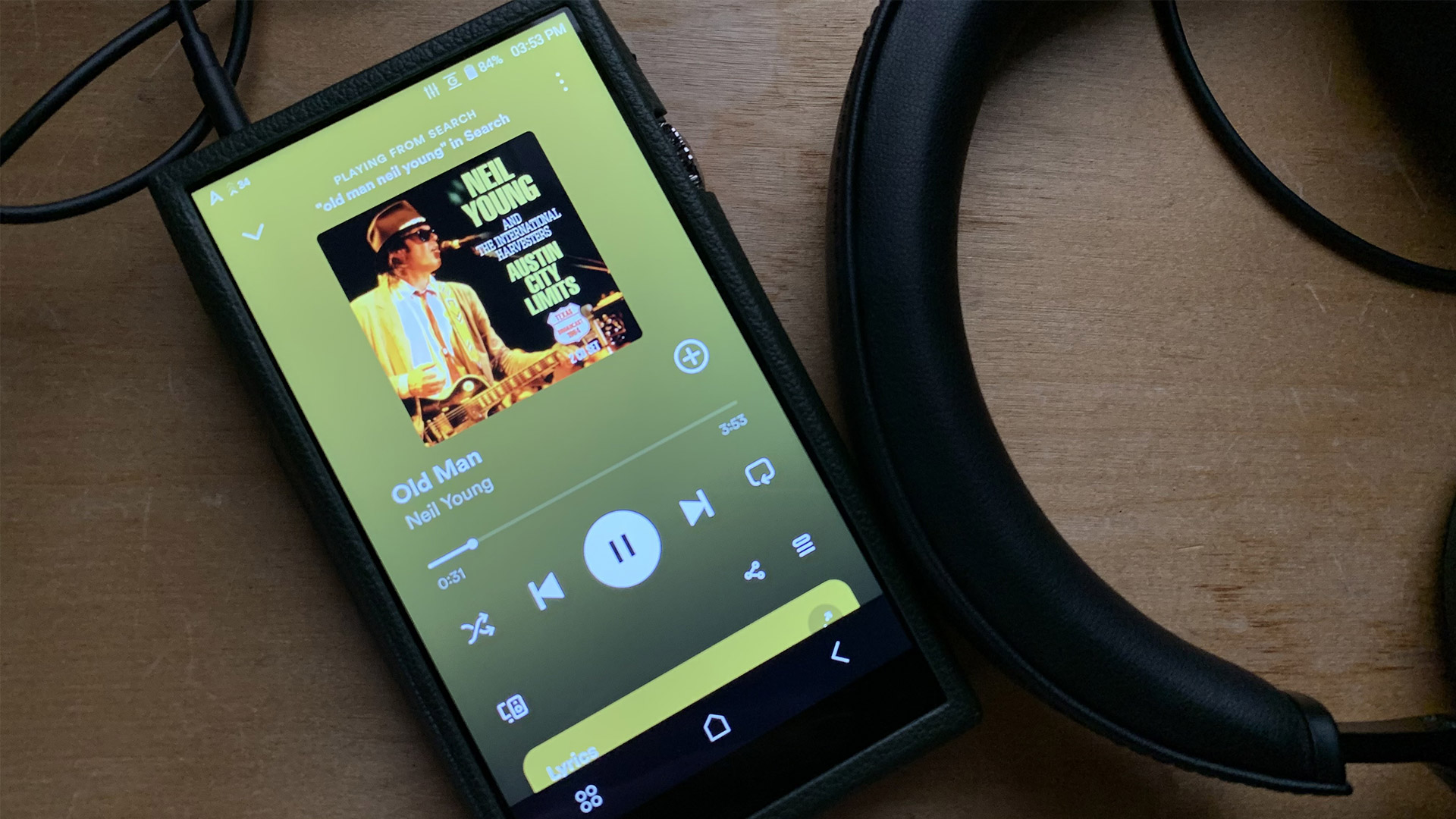

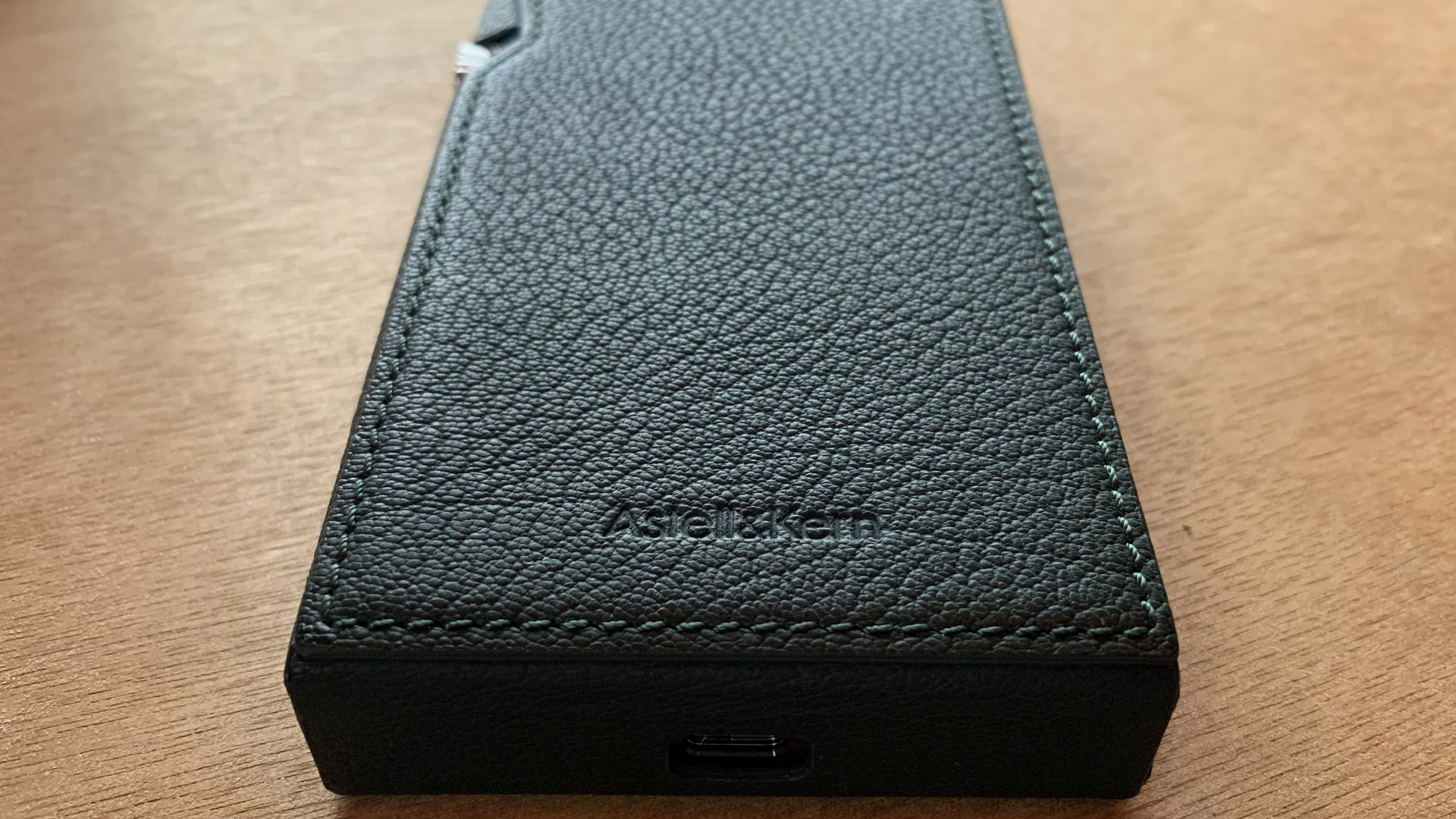
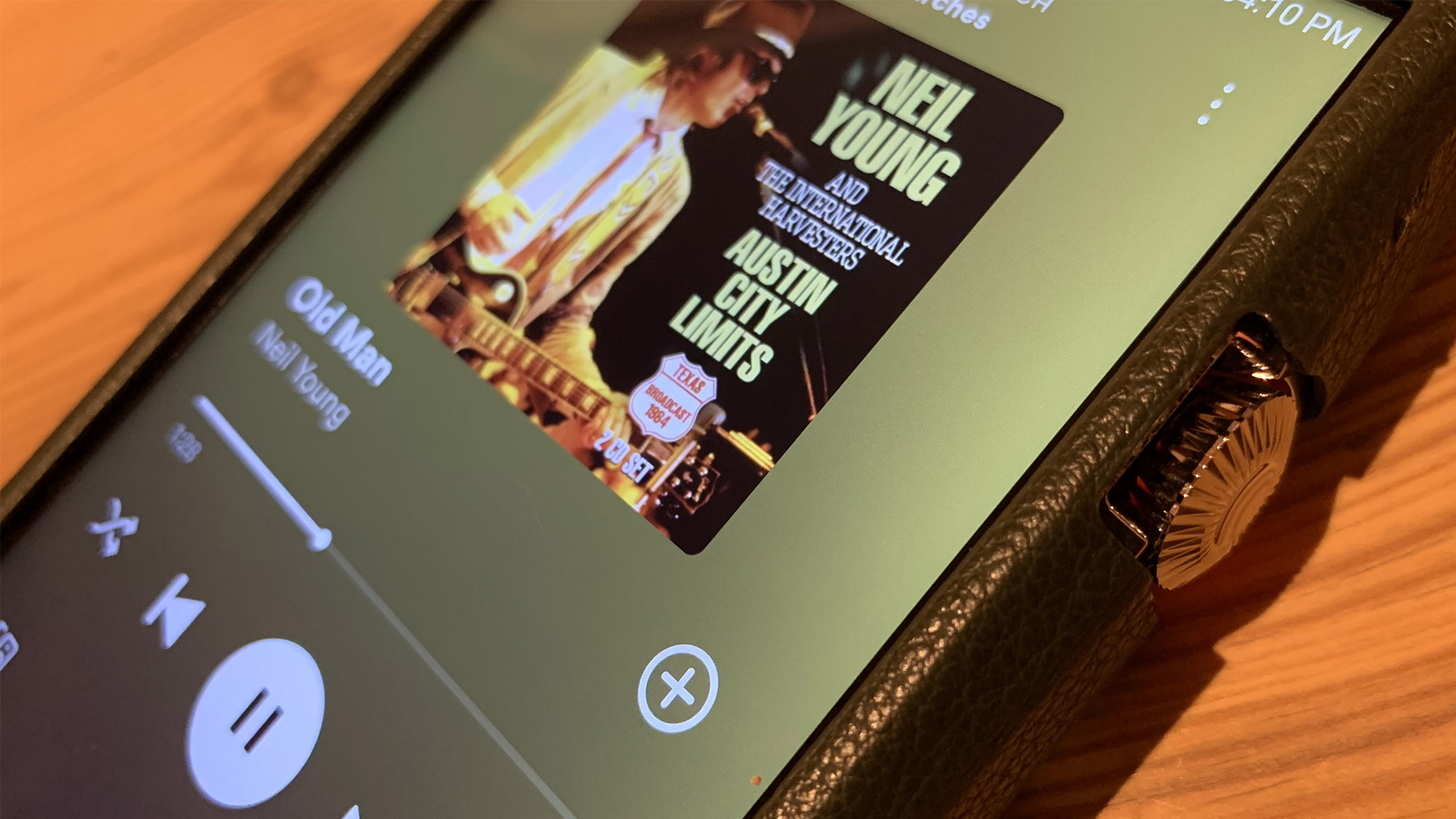
Specifications
Reasons to buy
Reasons to avoid
✅ Looks matter to you: It's beautifully designed and the finish is impeccable; a lovely object.
✅ You have high-end headphones: Again, you don't need excellent headphones but you'll want them.
❌ You're looking for good value: Everything here is impeccable, but you can get a similar sound for much less.
❌ You're vegan: The case is made from goatskin, which will put off a lot of people, especially vegans.
The Astell & Kern A&ultima SP3000 is one of the priciest DAPs in A&K's arsenal of expensive DAPs. It’s uncompromisingly specified (six DACs and full independent balanced and unbalanced audio circuits are just two of its highlights) and you'd be forgiven for filing it under 'high-end jewelry' in its press shots. But if you think you're basically paying a premium for the impressive design and casework here (it's available in Black, Silver, Copper or Gold), think again.
What are you paying for? Your money's going on the way it sounds. Oh, and its big, beautiful touch-screen. It supports every worthwhile digital format going and the ground-breaking independent audio circuitry keeps the signal path for the balanced and unbalanced outputs entirely separated.
It's clear that Astell & Kern decided not to compromise where technical specification was concerned with the A&ultima SP3000. And that’s before we mention the bespoke A&K-designed 'Teraton X' processor that nixes power supply noise and any conceivable audio nasties derived from the numerous DACs. The SP3000 delivers both amplification and sound quality that’s cleaner and more efficient than any digital audio player we've ever heard.
Read our full Astell & Kern A&ultima SP3000 review
The best ultra-cheap MP3 player

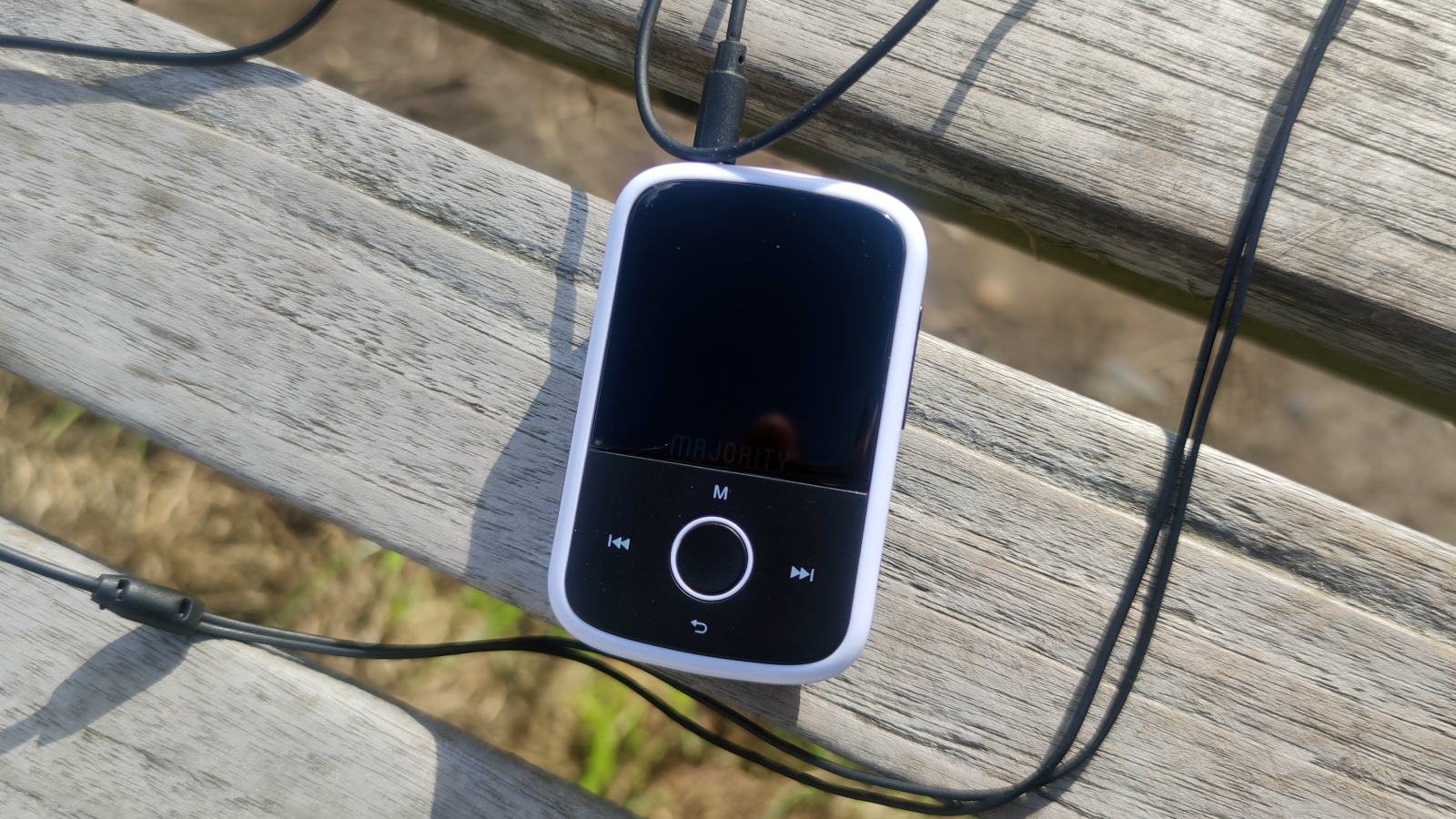


Specifications
Reasons to buy
Reasons to avoid
✅ You're on a very tight budget: This is the most cheap and cheerful option in our guide, but it still works well.
✅ You don't care about hi-res files: As the name suggests, this really is an MP3 player – it won't unlock and deliver hi-res file types such as FLAC or MQA in all their glory.
❌ You want lots of room: There's 16GB (although you can add an SD card), which likely won't be enough if you want to pack in every single one of your albums.
❌ You'd like a touchscreen: A device this cheap has to make sacrifices and a fancy touchscreen is the first thing to go.
This player can't be compared to the options listed above. For starters, the only officially supported file type is lowly, lossy, easy-to-store MP3 quality. And it's less than one tenth of the price of even the next-cheapest DAP here. Got it? Good. Also, there's no touchscreen, it only holds 16GB natively (although that's around 4,000 MP3-quality songs so, you know) and even if you wanted to expand on that with an SD card, your maximum storage is 128GB – or even more low-res songs! – before it can hold no more.
It won't stream over an internet connection, so no downloading from your favourite music streaming site, and it'll only accept your 3.5mm-terminated headphones (no 4.4mm or 2.5mm ports here) unless you want to ditch wires and hook it up to your wireless earbuds, which will impact the otherwise very-good 34-hour battery life.
So it's an MP3 player which you'll have to manually download songs to – like the olden days. And now we've mentioned everything it can't do, let's talk about what it can manage: your music, especially if you're a runner. This thing is tiny, and it has a lovely strong clip to attach it to your clothes. If that's what you're after – and handily, there's also a stopwatch if you're looking to beat your 10k PB – you've found a cheap and cheerful solution. To clarify, audiophiles will need to look at any of the other options within this buying guide. But those who want a simple music player to take anywhere will that this fits the bill nicely.
Read our full Majority MP3 player review
Meet the team
Everyone on the TechRadar team has years of experience testing the latest tech. But our audio tech team are particularly interested in the best headphones, best speakers and best MP3 players. With decades of combined experience, our audio experts know exactly what to look for from the best MP3 players. They've put each and every device through rigorous testing and, importantly, know a great deal about the audio tech space to add much needed context – which is essential when we're telling you why to buy one product over another.

Becky Scarrott is the Audio Editor at TechRadar and leads the platform's coverage of everything to do with audio and hi-fi. Becky joined the TechRadar team as a Senior Staff Writer in 2022. Before this, she spent more than three years at What Hi-Fi?, where she tested the latest audio technology, from budget-friendly earbuds to premium sound systems. Becky also holds an MA in journalism.

Matt Bolton is the Managing Editor for Entertainment at TechRadar. This means he oversees the platform's content on movies, TV shows, televisions, soundbars, headphones, and speakers. Matt has more than ten years of experience in tech journalism and joined TechRadar after holding the position of editor at T3 magazine. His writing and reviews have been featured in various publications, such as MacLife, PC Gamer, Digital Camera World, Edge, PC Plus, and MacFormat, among others.

Simon Lucas has spent almost 20 years writing about technology as a freelance journalist, with a particular focus on audio and video gear for the home. Simon was also the editor of What Hi-Fi? magazine and whathifi.com. His writing and tech reviews have also appeared in publications such as Wired, Metro, the Guardian, HiFi+, GQ, and others.

Tom Bedford was the Deputy Phones Editor at TechRadar until late 2022, having worked his way up from Staff Writer. He now works for the entertainment site What To Watch. He has specialized in phones and tablets over the years, but has also reviewed audio tech extensively, including headphones and MP3 players.
Frequently Asked Questions
Pairing one of the best MP3 players with the best wired headphones gives you a portable listening setup that's perfect for road trips, travel or high-fidelity listening on the move. But choosing the right player can be tricky.
With more of the market aimed at audiophiles, brands are pushing out increasingly advanced devices. You'll now find improved sound quality, broader hi-res audio support, and powerful built-in DACs that make these players better than ever. And looks matter too. Whether you love Astell & Kern's bold and beautiful designs, Sony's clean simplicity, or FiiO's minimal but functional devices, you’ll find something that suits your taste in our guide above.
Which is the best MP3 player?
The best MP3 player for you really comes down to your priorities and your budget.
If you want top-tier sound quality, generous storage and a premium design, models like the Astell & Kern A&norma SR35, Fiio M11S and Fiio M23 are hard to beat. If you’re shopping on a budget, there are plenty of excellent entry-level and mid-range players too, including the FiiO JM21 and Sony NW-A306. They still support high-quality audio without the flagship price tag.
Beyond cost and style, it's worth thinking which features matter most to your listening. If you need all day listening, look for strong battery life – like the Activo P1, which lasts up to 20 hours. If you listen on the move, you'll want something that's lightweight and portable. And, if you rely on specific hi-res audio formats, double check that your chosen player supports them.
Which is the best MP3 player with Bluetooth?
If wireless playback is important to you, look for MP3 players that support advanced Bluetooth codecs, such as aptX HD and LDAC, as these offer better audio quality than standard Bluetooth. All of the top MP3 players in our guide support Bluetooth, so you can listen wirelessly with ease.
Just remember that not all headphones support these better quality, so make sure both your player and your headphones are compatible.
It's also worth noting that even the best Bluetooth connections still compress audio, so wireless listening won't sound quite as good as a wired connection. Using Bluetooth also drains battery faster than wired playback too. If you want to listen all day, check out our guides to the best wired headphones and best wired earbuds.
Is an MP3 player worth buying?
Whether an MP3 player is worth it really depends on what you need. If you want a break from constant notifications and distractions, a dedicated music player lets you focus purely on listening without the pull of your phone.
Many people also prefer using an MP3 player for workouts, especially if they don't want to carry a bulky smartphone or risk dropping it at the gym.
And if your phone doesn't have enough storage for hi-res audio files, a dedicated player solves that problem. Not everyone will notice or care about the uplift in sound quality, but for the people who do, an MP3 player can make a huge difference to how they listen.
Is MP3 quality as good as CD quality?
The short answer is no. MP3 is a "lossy" audio format, which means some data is removed to keep file sizes small – usually frequencies that are less noticeable to human ears.
By comparison, CD-quality audio is much higher resolution at 1,411 kbps, while the best MP3 files top out at 320 kbps. Even though MP3s aim to cut only the least essential information, you may still notice weaker deep bass or a slightly "splashy" high end.
MP3s are convenient and widely supported, but if you want the best possible sound quality, lossless or hi-res audio formats are the better choice.
Are hi-res audio players worth it?
Hi-res audio players are absolutely worth it if sound quality is your main priority. They support high-resolution, lossless audio files, which preserve far more detail than standard MP3s and deliver clearer sound, a wider soundstage and richer bass.
That said, whether a hi-res player is worth the investment really depends on your setup. If you're using budget headphones or mostly stream compressed music from services like Spotify, you may not hear a dramatic difference. But pair a hi-res player with good headphones or a high-quality streaming service, and the jump in audio quality can be significant.
What’s the best way to get hi-res music files?
There are a few different ways to get hi-res music files, and the best option depends on whether you prefer downloading or streaming. the most straightforward route is to download hi-res tracks from specialist platforms or use streaming services that support hi-res audio.
You can buy and download hi-res tracks from sites like HDtracks, ProStudioMasters and Qobuz, in formats like ALAC, FLAC and WAV. This route gives you full ownership of the files.
If you’d rather stream hi-res music, then services like Apple Music, Qobuz and Tidal all offer lossless and high-resolution catalogues.
You can also enjoy hi-res by ripping your own CDs and saving them in a lossless format, such as FLAC to preserve the highest possible quality.
What is DSD audio – and is it any good?
DSD (Direct Stream Digital) is Sony’s proprietary high-resolution audio format, created as an alternative to the more common PCM (Pulse Code Modulation) system used in formats like WAV, FLAC, ALAC, and AIFF.
Developed by Sony and Philips in the 1990s, DSD was originally intended as an archival format. Unlike PCM, which uses multi-bit recordings (like 16-bit for CD quality), DSD employs a 1-bit Sigma Delta Modulated (SDM) system. DSD’s sampling rate is 2.8224 MHz. This is 64 times that of 44.1 kHz, aka CD audio sampling rate, but with 1-bit samples instead of 16-bit. You can read more in our hi-res file format explainer.
DSD is known for capturing exceptional detail with a smooth, natural sound that many audiophiles prefer. Qobuz has begun offering DSD downloads to its platform, making it easier for newcomers to explore the format.
Can I listen to hi-res music players wirelessly?
Yes, you can listen to a hi-res audio player wirelessly, but it's worth remembering that Bluetooth usually compresses audio. Newer codecs, such as LDAC and aptX HD offer much better wireless sound quality, so for the best experience you'll want both your player and your Bluetooth headphones to support these formats.
That said, many audiophiles still feel that even the best wireless setups can't quite match the clarity of a wired connection, especially when you're listening to true high-resolution files.
Will listening with wired vs wireless headphones make a difference when listening to hi-res audio?
The difference between listening to hi-res audio with wired vs wireless headphones used to be huge, but that gap is slowly closing.
If you want the very best sound quality, wired headphones are still the top choice. A wired connection doesn't compress your audio the way that Bluetooth does, so you hear the full depth and detail of your music.
That said, Bluetooth audio has improved a lot. Newer codecs, like LDAC or aptX Adaptive, can transmit far higher quality audio than standard ones, like SBC or AAC – just make sure both your player and your headphones support the same one.
Even so, Bluetooth always involves some compression, which is why many audiophiles still feel that hi-res music sounds best through a wired setup. If you're chasing the highest possible audio quality, a wired connection remains the strongest option.
What kind of storage do hi-res audio players use, and how much do I need?
Most of the best hi-res audio players come with some built-in storage, but almost all of them support expandable storage via microSD cards. This is important because hi-res audio files can take up a lot of space.
As a rough guide, around 64GB is enough for roughly 100 hi-res albums. For a medium-sized collection, aim for 128GB to 256GB, and if you want to keep your entire library offline, you'll probably need 512GB or more.
Entry-level players usually offer 16GB to 64GB of built-in storage, while more premium models include 128GB or even more.
But even those bigger storage solutions can fill up quickly, which is why choosing a player with microSD support – up to 1TB or even 2TB depending on the model – is a smart move.
Expandable storage also gives you much more flexibility in what you carry with you, and lets you listen offline without relying on streaming services.
Why do people still use MP3 players?
There are several reasons you might want to use a dedicated digital audio player instead of relying on your phone. The biggest is sound quality: many DAPs can play higher-quality files than most smartphones can handle, especially now that so many phones no longer include a headphones jack.
For serious music fans, Bluetooth audio, while better than it used to be, still can’t deliver full hi-res quality without a wired connection. Even premium wireless headphones, like the AirPods Max, can’t handle Apple Music’s Lossless formats wirelessly.
Another benefit is music curation. Not every track you love is available on the best music streaming services, and catalogues change over time. With an MP3 player, you can store and own your music, give you reliable access without ads, monthly fees or disappearing albums.
MP3 players were also designed specifically for music playback, which gives them advantages over smartphones in areas like audio performance, battery life, and storage. Plus, they don’t require a mobile or Wi-Fi connection, so you can take your music anywhere, even offline.
What's the highest quality way to listen to music?
The highest quality way to listen to music depends on a few key elements. First, you'll need hi-res audio files (our hi-res explainer and audio file-format explainer guides break down exactly what that means). Next, you'll want a high-quality audio player, and a capable set of headphones or speakers to do those files justice.
Using lossless audio formats, like FLAC or ALAC, helps to preserve all the detail from the original recording. Pair those with a high-res audio player or digital-to-analog converter (DAC) to ensure the music is processed with the precision it deserves.
And remember, your output matters too. You should invest in high-quality, over-ear headphones or audiophile-grade speakers. Wired connections are typically preferred right now over wireless because that way you can avoid any loss of quality due to compression. However, take a look at our LE Audio explainer to find out how advances in Bluetooth can improve audio quality. As well as our Snapdragon Sound explainer for more on how this technology will soon improve your audio hardware.
Combine all of these elements and you get a rich, immersive listening experience that reveals every nuance in your favorite music.
What music players do audiophiles use?
Audiophiles typically choose high-resolution audio players and digital-to-analog converters (DACs), or devices that combine both, to get the best possible sound quality.
Brands like Astell&Kern and FiiO are especially popular thanks to their exceptional build quality, impressive sound performance, and advanced features. These players support a wide range of audio formats, including lossless and high-res audio, and often come with detailed, customizable sound settings.
That level of flexibility let's audiophiles fine-tune their listening experience to match their personal preferences, ensuring they get the most out of their music.
What’s the difference between balanced and unbalanced output on hi-res players?
Balanced vs unbalanced outputs describe how an audio signal travels from your hi-res player to your headphones or amp.
An unbalanced output is the standard connection you’ll see on most devices. This is usually a 3.5mm headphone jack. It uses two wires (signal and ground), which makes it more prone to interference, especially when you're using longer cables.
A balanced output typically uses a 2.5mm, 4.4mm or XLR connection. It adds an extra signal wire that carries an inverted version of the audio signal. This helps cancel out any noise and interference from the electronic connections, and the result is a cleaner sound. Both your audio player and the headphones you’re listening with will need to support it.
How do you convert M4A to MP3?
You might want to convert an M4A file (an Apple audio format) to MP3 because MP3s are more widely compatible, take up less space and are often easier to edit.
There are several ways to make the conversion. One of the quickest is to use free software, like VLC Media Player, Audacity or another online converter. Each tool works slightly differently, but the process is usually simple: upload the file, choose MP3 as the output format and hit save. Just make sure the tool you use is secure and has good reviews. Also check how they handle your files. Because we know that some free online file converters could infect your PC with malware.
You can also convert M4A files to MP3 directly in Apple Music, which has a built-in feature for exporting tracks in different formats.
What is MP3?
MP3 stands for MPEG-1 Audio Layer 3. It’s a digital audio format developed in the 1990s.
It compresses audio files by removing frequencies that the human ear can’t easily detect. This makes MP3 files much smaller than uncompressed formats, like WAV. Because MP3 files are smaller and more efficient, they became the dominant standard for music downloads and portable players.
Newer formats, like AAC and FLAC can offer better sound quality. But MP3 remains one of the most widely supported audio formats today. For a full breakdown of popular file types, check out our audio file formats explained guide.
How do you turn video into MP3?
To turn a video into an MP3 file, you’ll need conversion software or an online tool. Apps like VLC Media Player, Audacity or other dedicated video to MP3 converters, which are straightforward to use. Just upload a video, choosie MP3 as the output format and save the file.
Always check a converter's security and reviews before downloading or uploading anything. Some tools are overloaded with ads or may pose privacy risks.
If you’re converting a YouTube video, take a look at our guide to the best free YouTube to MP3 converters too – and be sure to stay the right side of YouTube's Terms of Use and copyright laws.
How do you convert a WAV file to MP3?
A WAV file is a high-quality, uncompressed audio file format, which means the files are large. Converting WAV to MP3 reduces the file size and makes the audio much easier to store and share.
You can convert WAV files to MP3 with most free conversion tools, including VLC Media Player and Audacity, though many other converters are available.
The trade-off is a drop in audio quality, since compression removes some detail. For the best results, choose the highest MP3 bitrate (320kbps) to preserve as much of the original sound as possible.
How do you edit MP3 files?
To edit an MP3 file, you'll need an audio editing program. There are plenty of options, but Audacity is free and Macs often come with GarageBand installed. These tools let you trim tracks, adjust the volume, splice sections together and more. If you want to do something really simple, an online tool may be enough. It really depends on how much editing you want to do.
Just keep in mind that every time you export an MP3 after editing it, you’ll lose a little more audio quality due to compression.
How do you add album art to MP3?
Album art is the cover image attached to an MP3 file. It’s stored in the file’s metadata and it appears automatically when you play the track in a music app or on an MP3 player.
You can add album art using tools like Mp3tag or MusicBrainz Picard. Just open the MP3, drop the artwork in the metadata editor and save. Some music management apps can fetch artwork automatically from online databases.
Embedding the artwork directly to the MP3 ensures it’ll display properly on MP3 players and any other devices you use.
How do you put music on an MP3 player?
Every MP3 player works a little differently, but most transfer music just like moving files between folders or copying them to a USB stick. Simply plug your MP3 player into your computer with a cable. Then open the device folder and drag your music files across.
Some players come with their own syncing software, while others let you copy files directly. Make sure your tracks are in a supported format. If your MP3 player has a microSD slot, you can also load music onto the card separately and insert it directly.
How do you download Spotify songs to MP3?
You can’t officially download Spotify songs as MP3 files. Spotify tracks are protected, so even if you're a Premium subscriber, any downloads stay inside the Spotify app and can't be exported.
There are third-party Spotify to MP3 apps, but they violate Spotify’s terms and could put your account at risk, so avoid them.
The good news is that a lot of the best MP3 players in the guide above support streaming services directly, so you can listen to your Spotify tracks that way. If you want actual MP3 files, you’ll have to buy them from an online music store.
How we test the best MP3 players
Hi-res file support: we test dozens of hi-res portable music players every year at TechRadar, and that means we know exactly which features, specs, file support and wireless audio codecs to look for. It's important for us to compare the performance of these players against the claims made by their manufacturers, which is why we take the time to make sure the stamina, durability, connectivity and sound quality claims are legit.
Comparative testing against like-for-like class-leaders: we make sure to test each product against its chief competitors too, so you can be sure that if we say so, the product is the best bet for the money. We live with these players for weeks and we run them in religiously so that the components have 'bedded in' before we commence our tests, and we don't finish testing until we are certain of the sound quality.
Several headphones; myriad musical genres: on this, we test the audio performance using a range of musical genres and with both wired and wireless headphones – and streamed and downloaded music from various sources, to ensure that these products can handle everything from thumping dance tracks to softly-spoken podcasts in whatever format we throw at them.
Only the most experienced audio reviewers: after more collective years in this game than we'd care to divulge, we are truly confident that our star-rated reviews are the best indication of the quality. Every reviewer is highly knowledgeable about audio tech and most of us have a specialism, giving us years of industry insights and real-world experience of other devices that add a rich layer of context to each and every review. There are no sales teams involved in our verdicts and we're not getting paid bonuses to hand out extra stars, which gives us complete impartiality. It also means if we don't like it for sound, design, usability and features, we simply won't recommend it here.
The latest updates to this best MP3 players guide
November 13, 2025
Refreshed the introduction and added links to other guides and products. Condensed some of our mini reviews. Checked all copy to make sure it's up to date. Refreshed our FAQs section.
September 13, 2025
Added several more FAQs to the guide to help people decide whether an MP3 player is right for them, and to explain a few things around file conversion and more.
August 6, 2025
Added new information to the introduction to reflect new products on our schedule and updated copy throughout to reflect our current class-leaders in this category. Added links to newer explanatory features on advanced Bluetooth codecs, aptX and a feature on the FiiO M23.
June 5, 2025
Added several new FAQs to the guide, including 'What's the best way to get hi-res music files?' and 'What’s the difference between balanced and unbalanced output on hi-res players?'
April 3, 2025
Refreshed the introduction. Checked all of the copy in this guide to ensure everything is up to date and relevant to our readers.
March 7, 2025
Refreshed the introduction. Added the 'best entry-level' category, just so we could recommend the Fiio JM21 – it's really that good.
February 10, 2025
Re-ordered the product list based on the latest prices for our recommendations, and based on some falling out of stock.
January 10, 2025
Rewrote the introduction. Added details of our all-new review of the Activo Q1 IEMs to our Activo P1 entry as they do indeed pair well together. Updated copy to reflect the product landscape in 2025 (and that these players are still the best).
Read more updates
December 13, 2024
Refreshed the introduction. Added details of the Activo Q1 wired IEMs into our Activo P1 entry as they should pair well together. Updated copy to make sure everything in this guide is bang up to date.
November 15, 2024
Updated the introduction. Added a 'Black Friday' section to share news of Black Friday deals we've spotted on the best MP3 players. Included more images for each buying guide entry, so readers can get a better look at our expert recommendations. Added a 'meet the team' section so that readers can find out more about the skills and experience of our expert audio team.
October 16, 2024
Rewrote the introduction. Updated our FAQ section and added a new entry 'what is DSD audio?' to help readers understand this kind of audio file type.
September 18, 2024
Rewrote the introduction to make it more succinct and current. Added 'buy it if/don't buy it if' advice to each MP3 player listed in our guide to make it more useful for buyers. Rewrote the FAQs section to make information more current and relevant.
August 21, 2024
Rewrote our FAQ section to reflect products we now recommend; itemised our 'How we test' section to better explain our review testing process.
July 23, 2024
Added the Activo P1 as our 'best cheap A&K buy' and the FiiO M23 as our 'best overall' pick. Switched the Fiio M11 to 'best affordable FiiO'. Added the Majority MP3 player as 'best ultra-cheap' pick.
June 24, 2024
Added the Astell & Kern SP3000T as our 'best money-no-object' pick. Switched the Astell & Kern SR25 MKII for our 'best affordable A&K buy' and the Astell & Kern SP3000 as our 'best for design'.
May 29, 2024
Added this update log! Updated the copy to reflect current top picks and why. Added our audio file types explainer to help listeners better understand their music.
April 2, 2024
Removed the Onkyo DP-X1A from this list as the best mid-range digital audio player due to it no longer being available. There's also no stock currently available in the UK for the A&norma SR25 MKII. This could be down to it being succeeded by the Astell & Kern A&norma SR35 in May 2023.
January 30, 2024
Added the Astell & Kern A&norma SR35 and the Astell & Kern A&ultima SP3000. Re-ordered to reflect the newer products and updated copy throughout. The SR25 MkII and SP2000T remain in this list because although older, they're still in the current lineup at A&K and they may well receive certain discounts in upcoming sales events.
December 6, 2023
We still haven't yet reviewed Astell & Kern's SP3000 but with a new limited edition gold casing being released, that may very well soon change. For now, though, our list has remained unchanged.
September 25, 2023
Added new navigation features to make it easier to find particular models. Updated the list based on our latest reviews, and removed models no longer available to buy.
Sign up for breaking news, reviews, opinion, top tech deals, and more.

Becky became Audio Editor at TechRadar in 2024, but joined the team in 2022 as Senior Staff Writer, focusing on all things hi-fi. Before this, she spent three years at What Hi-Fi? testing and reviewing everything from wallet-friendly wireless earbuds to huge high-end sound systems. Prior to gaining her MA in Journalism in 2018, Becky freelanced as an arts critic alongside a 22-year career as a professional dancer and aerialist – any love of dance starts with a love of music. Becky has previously contributed to Stuff, FourFourTwo and The Stage. When not writing, she can still be found throwing shapes in a dance studio, these days with varying degrees of success.